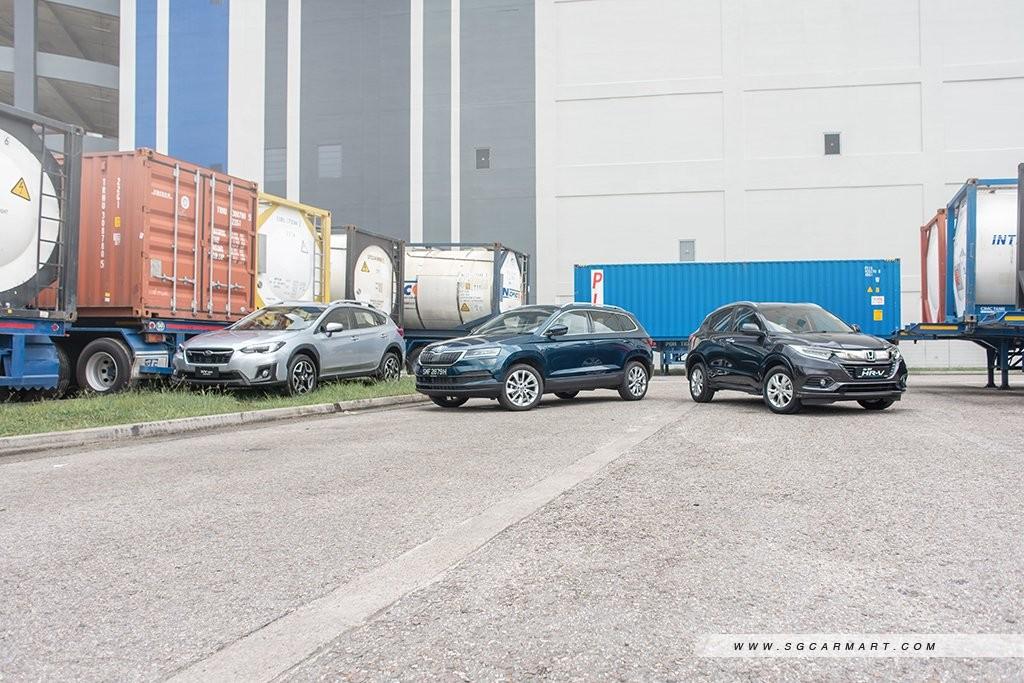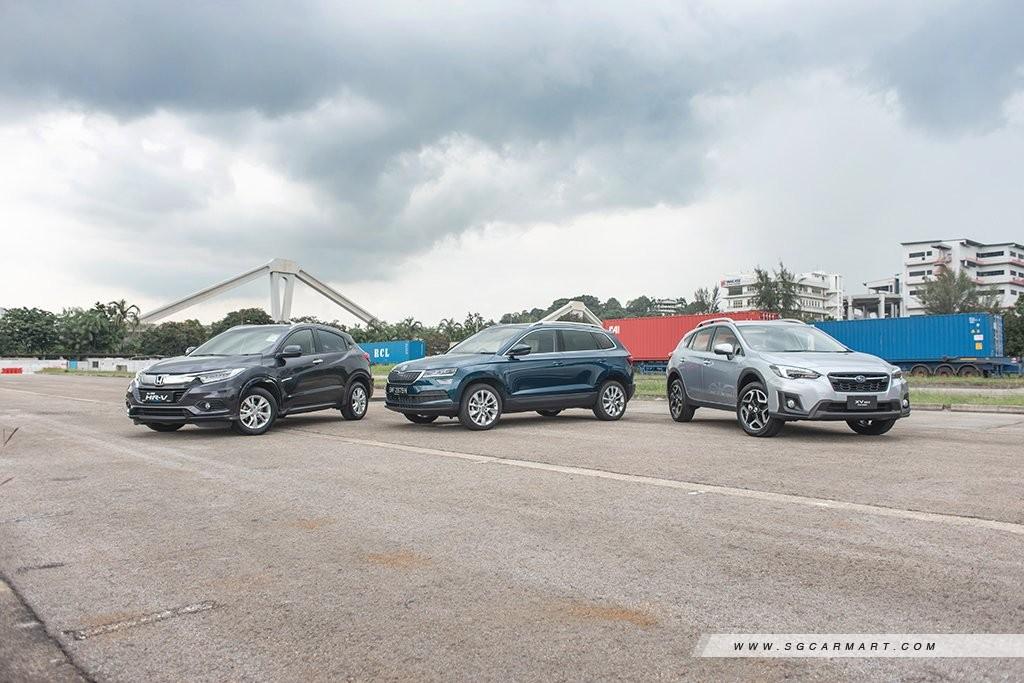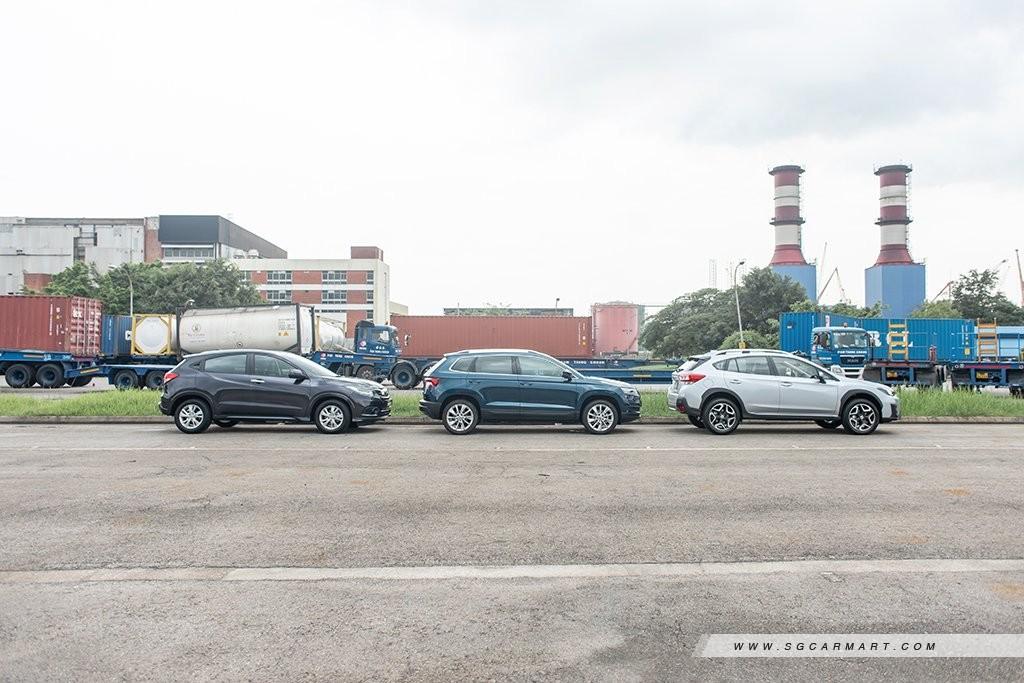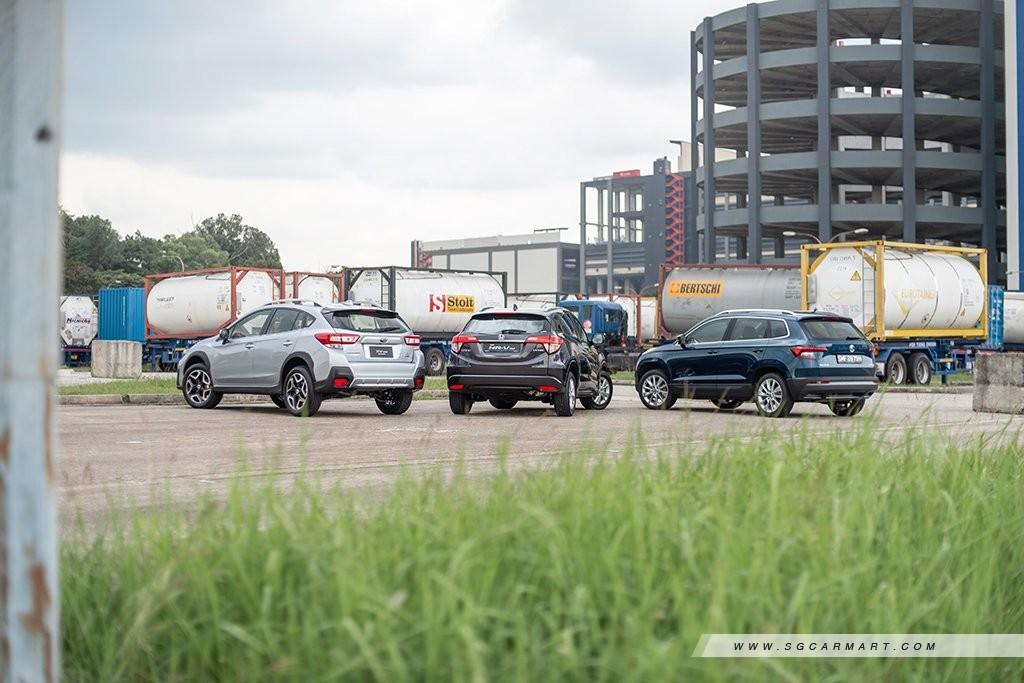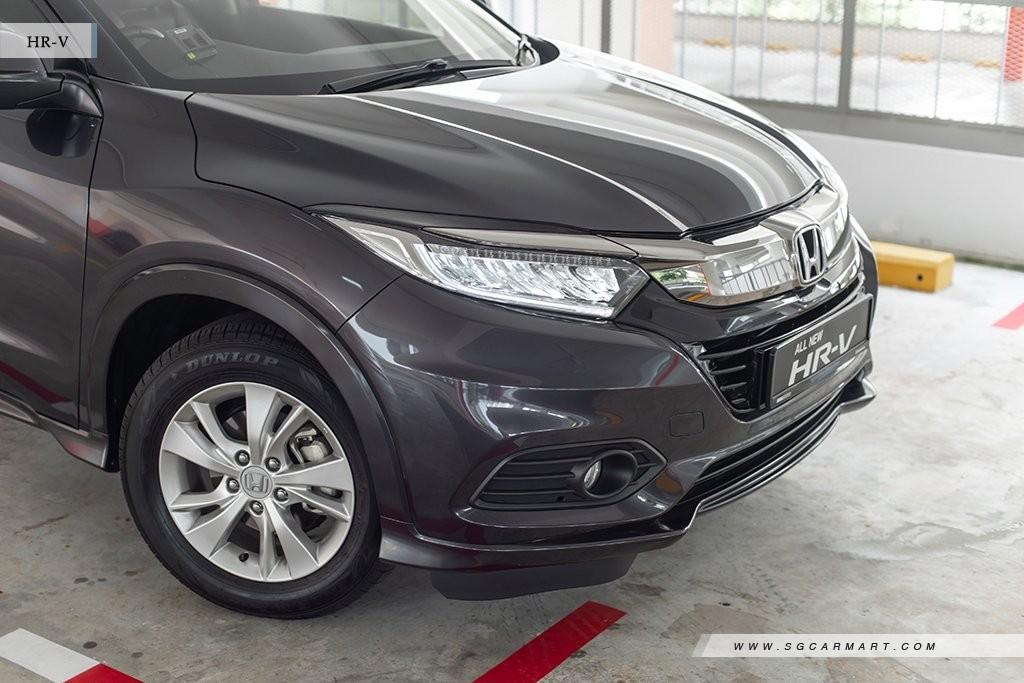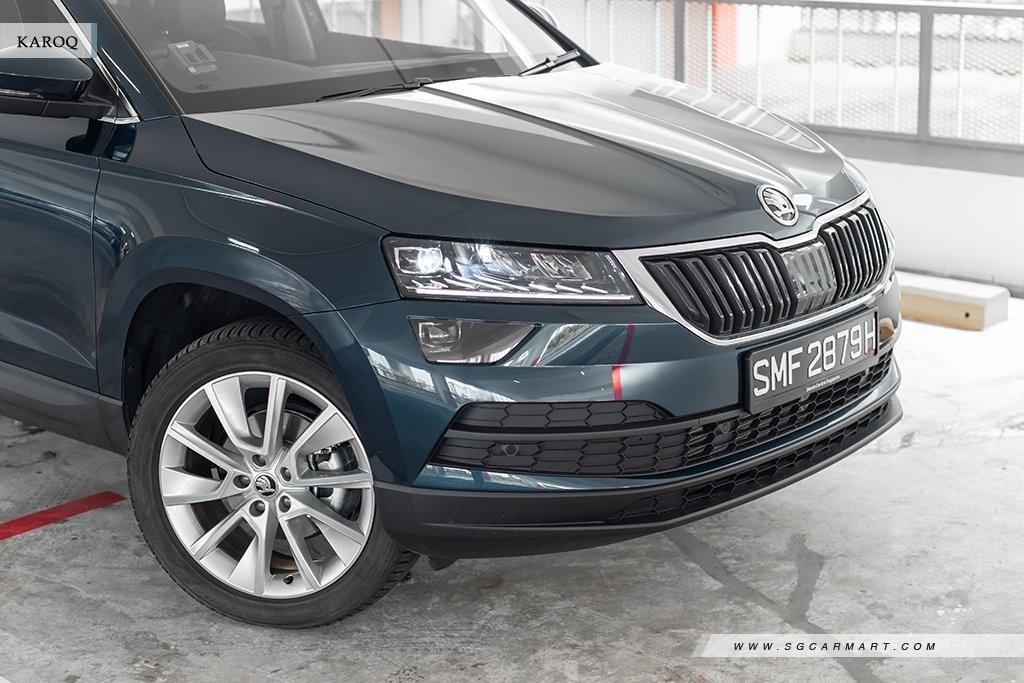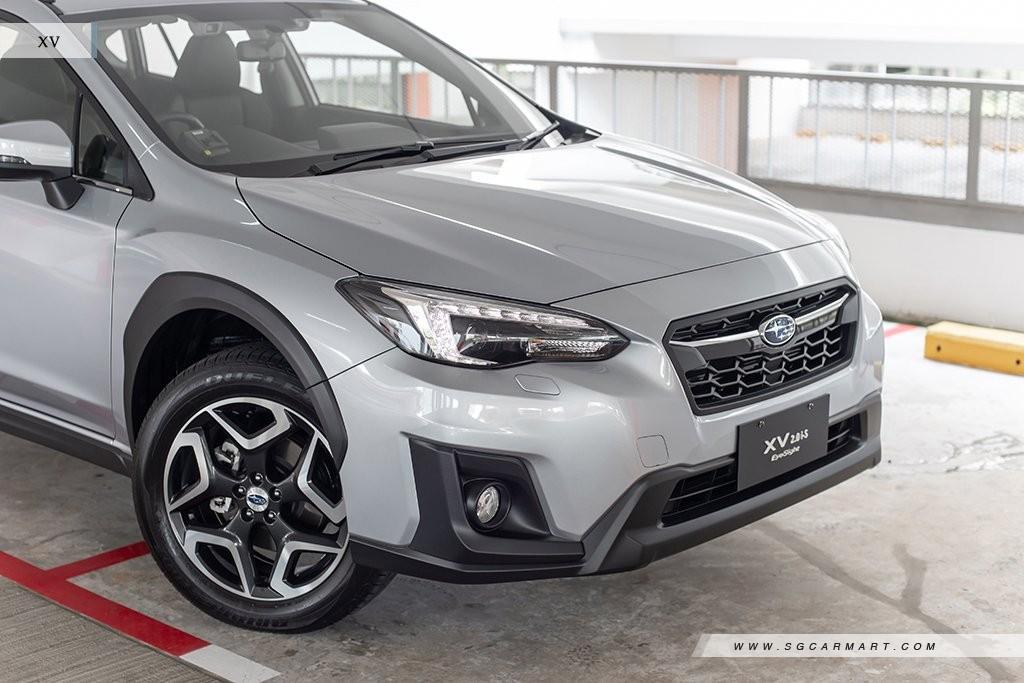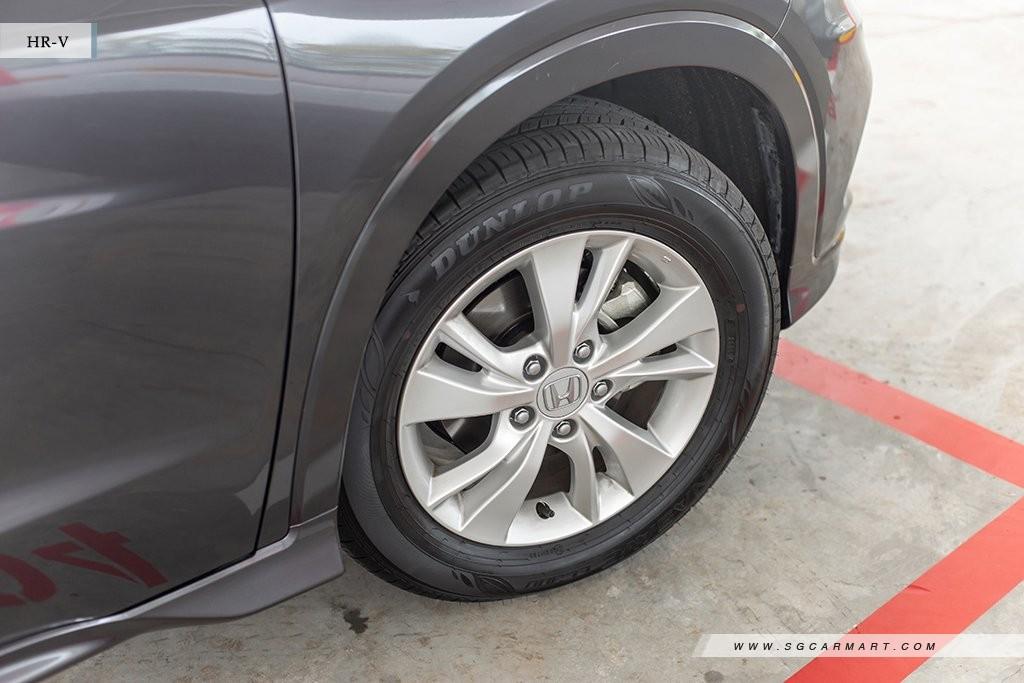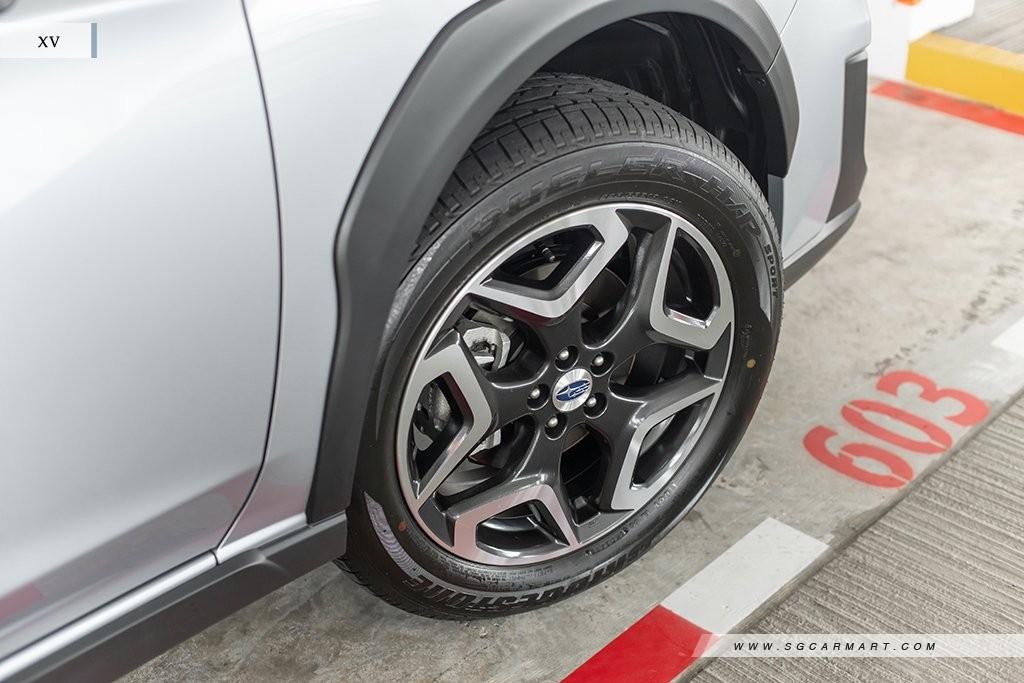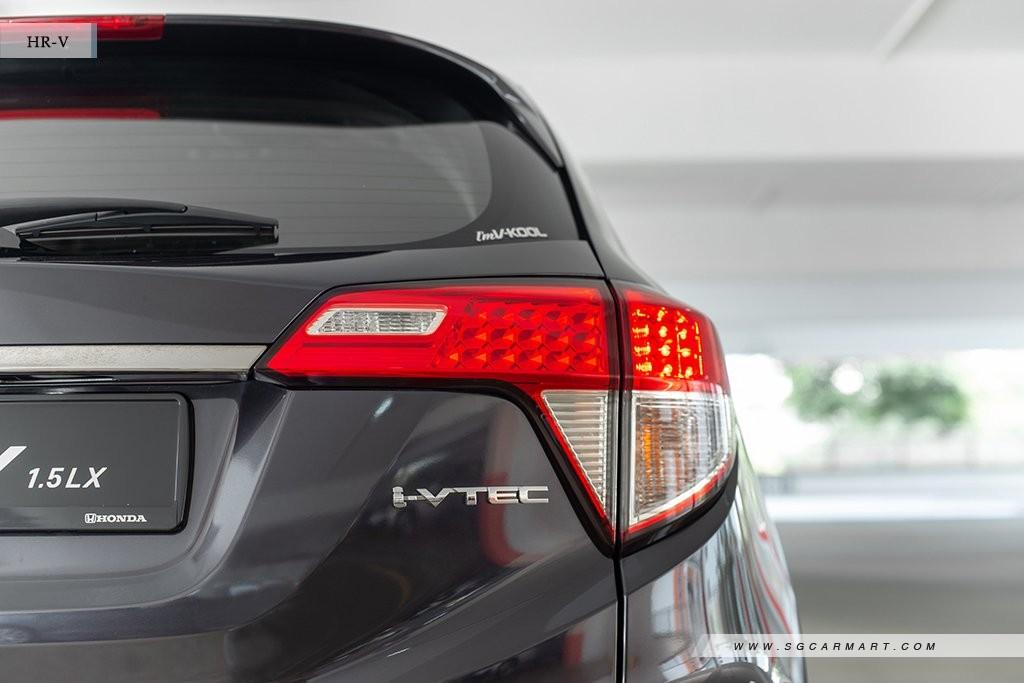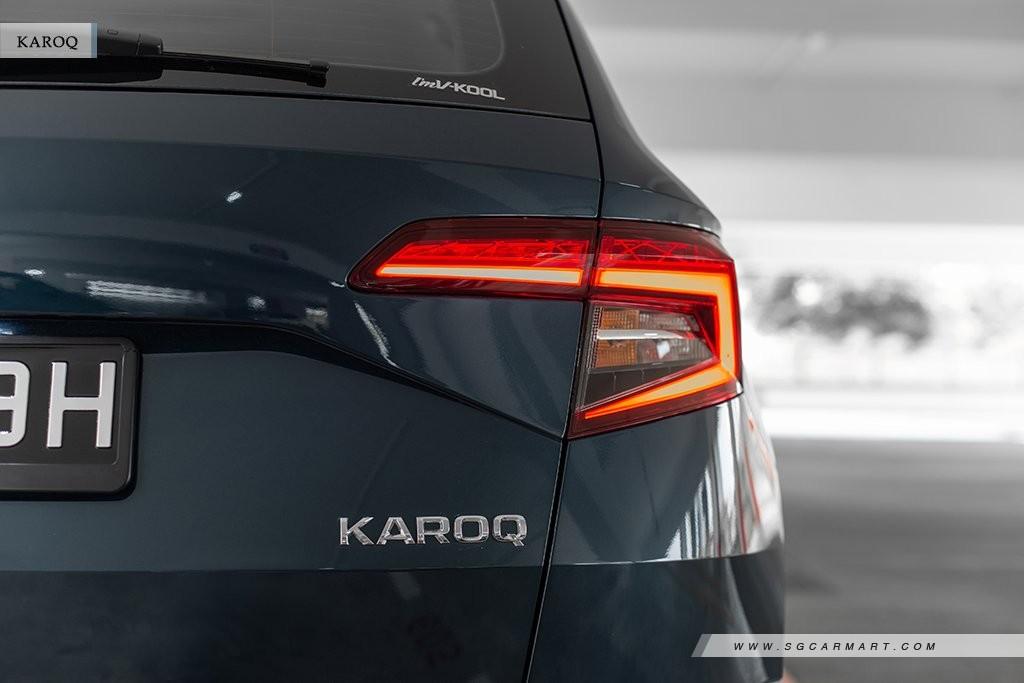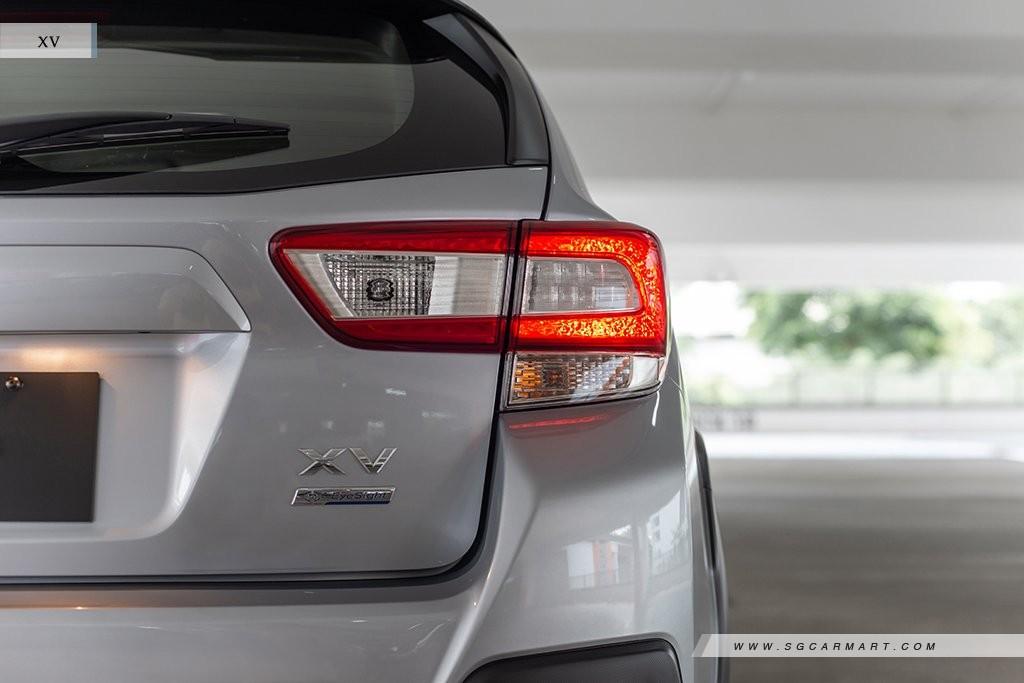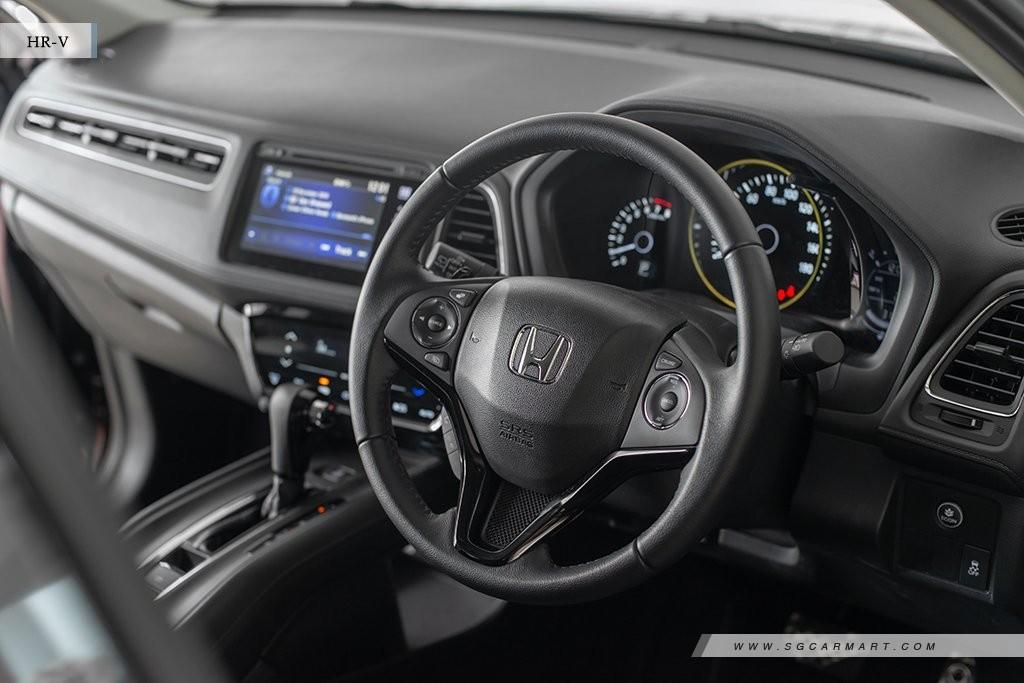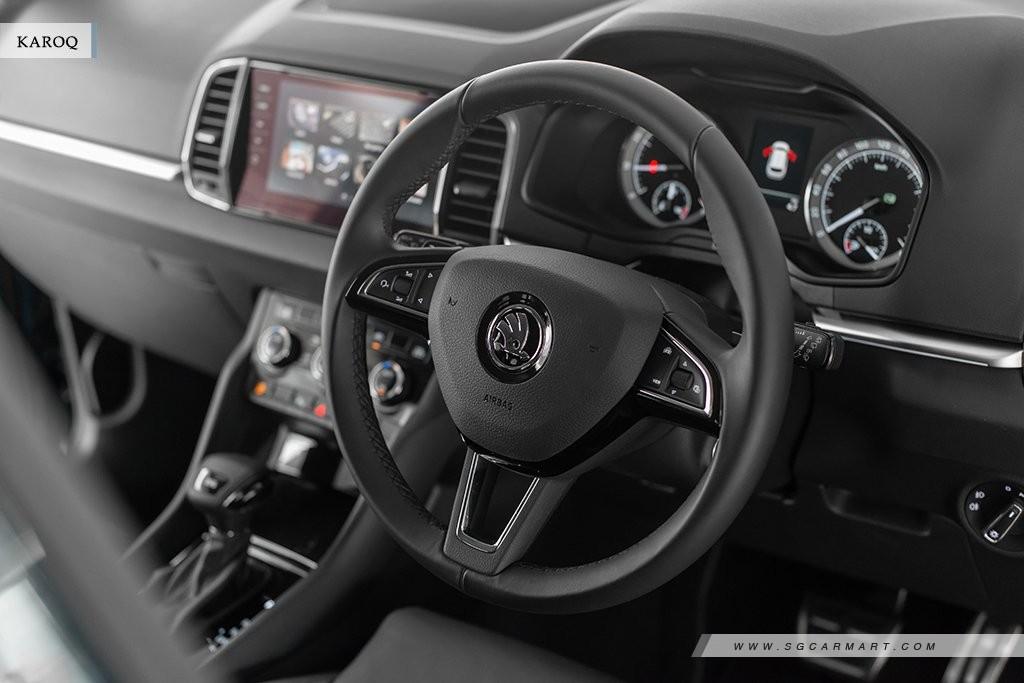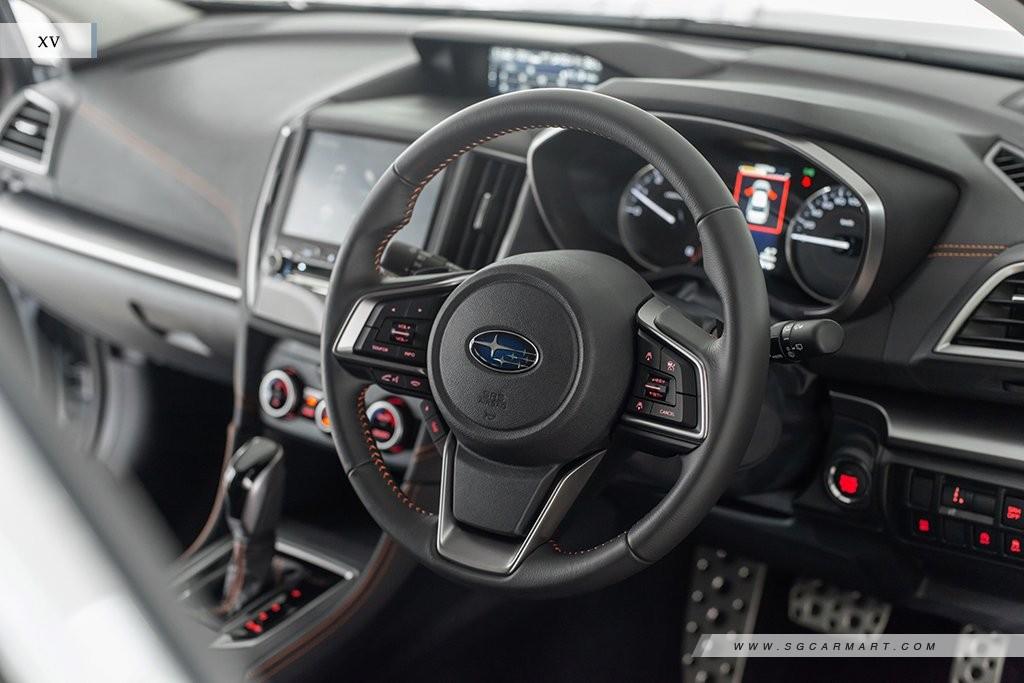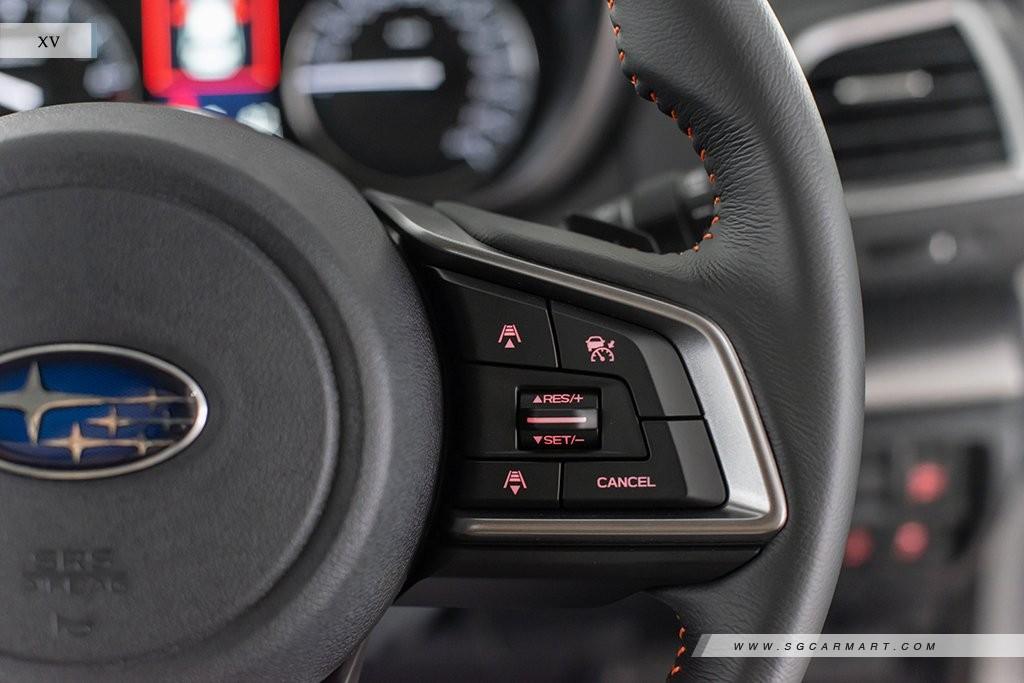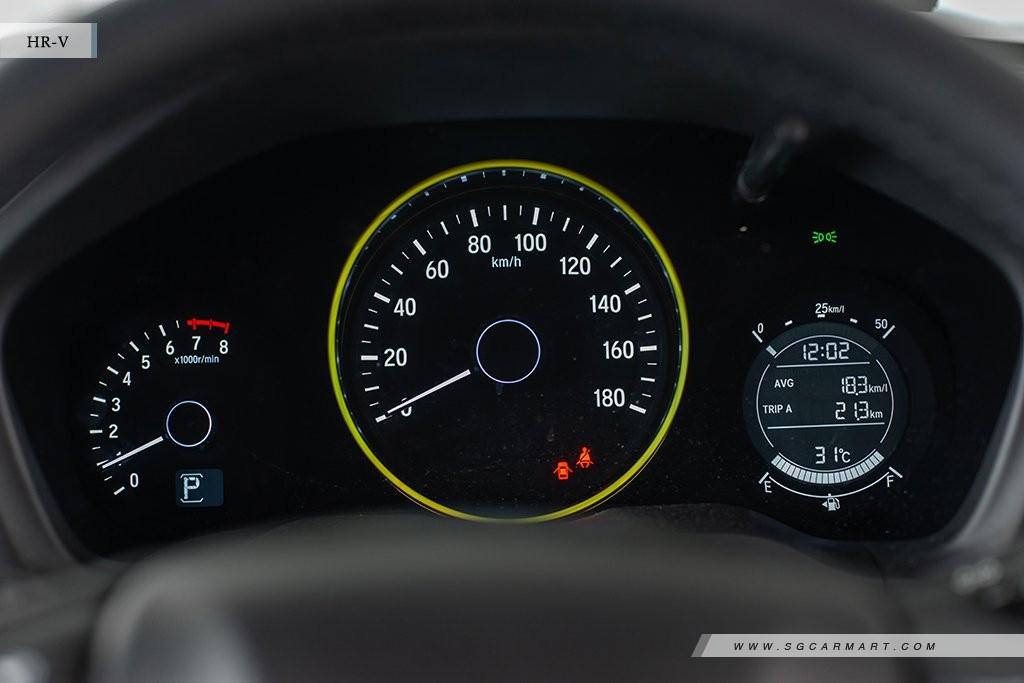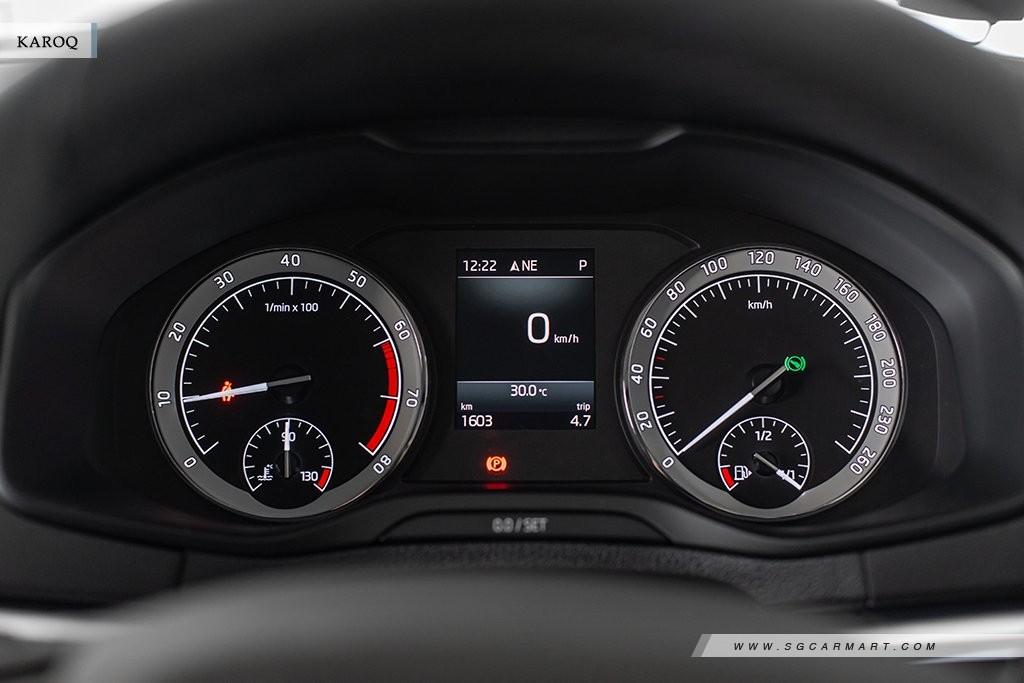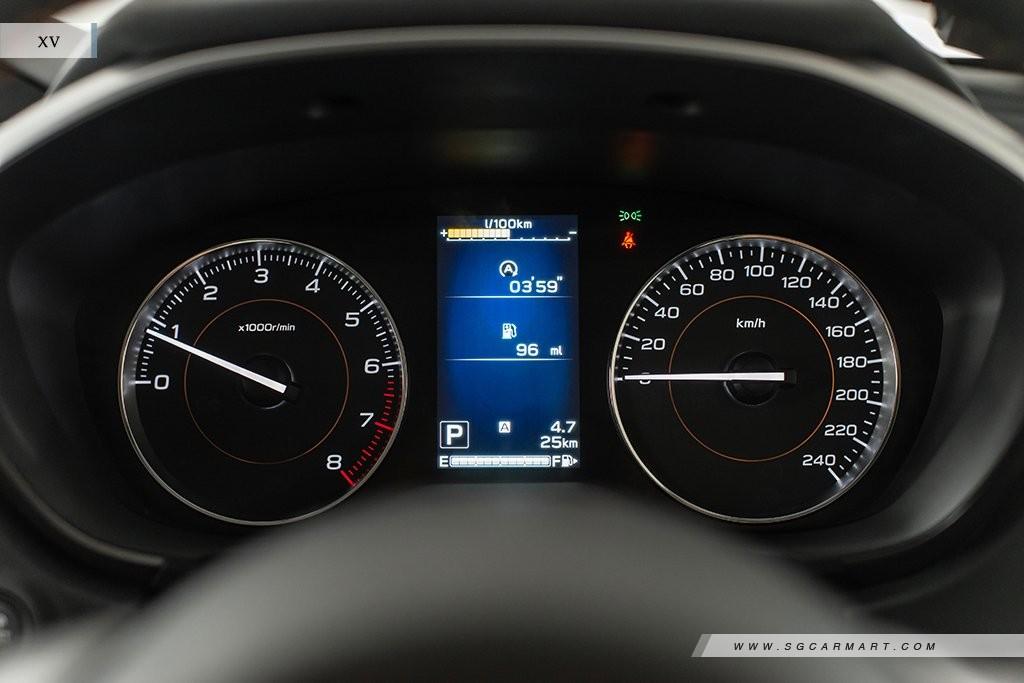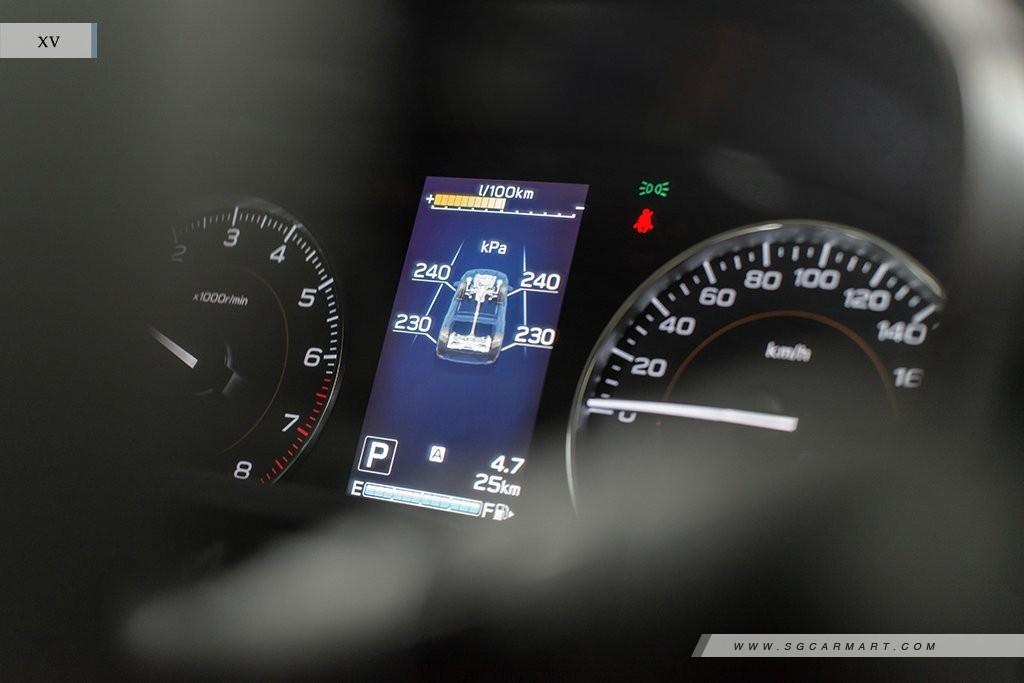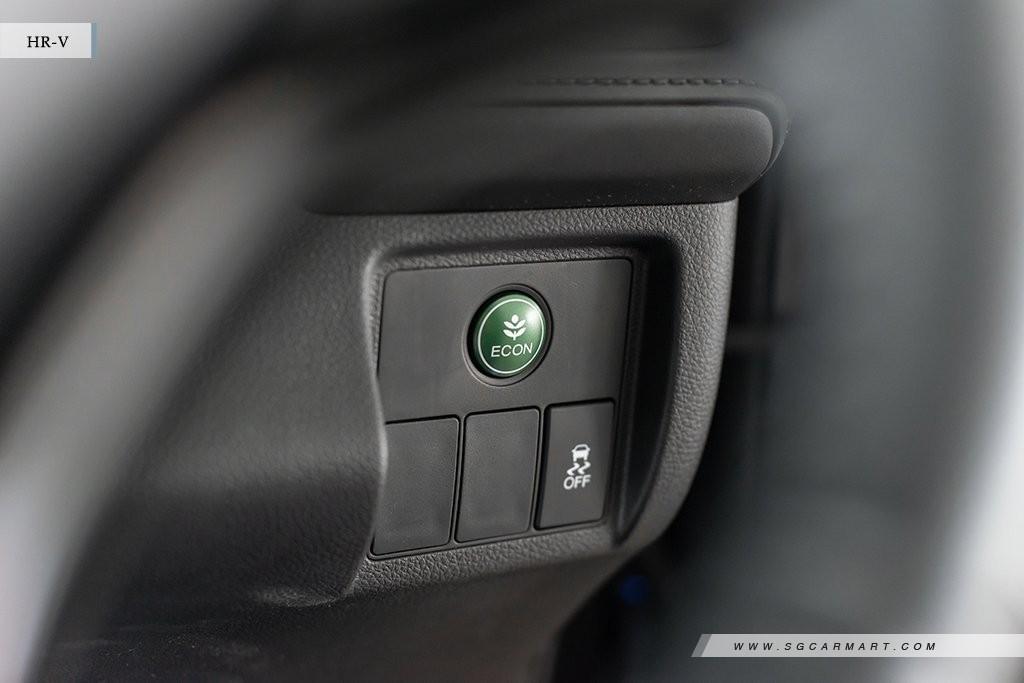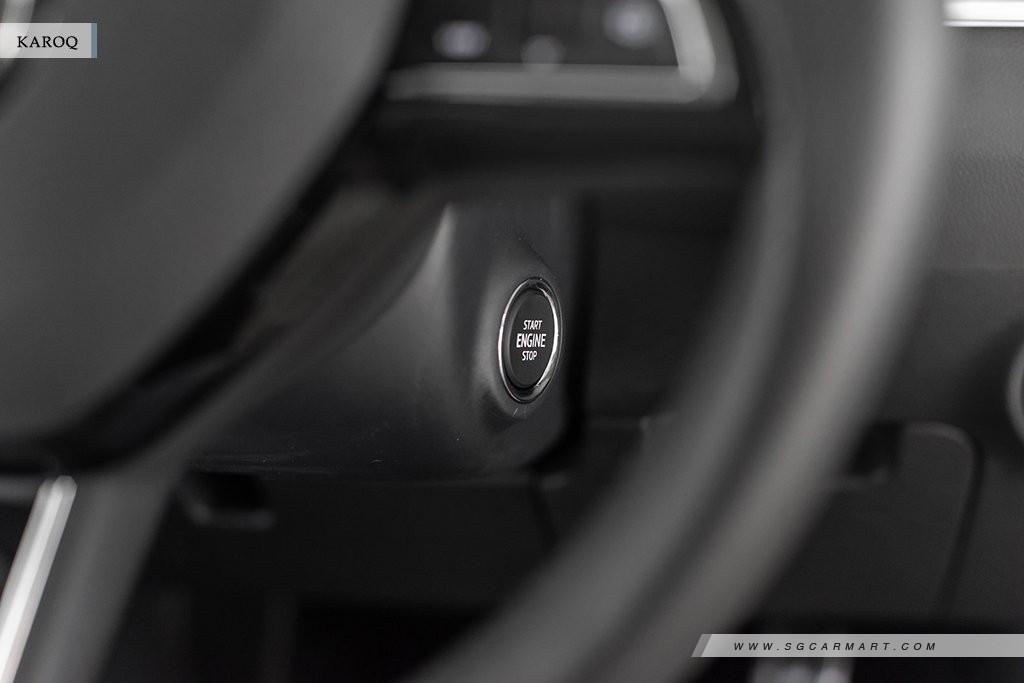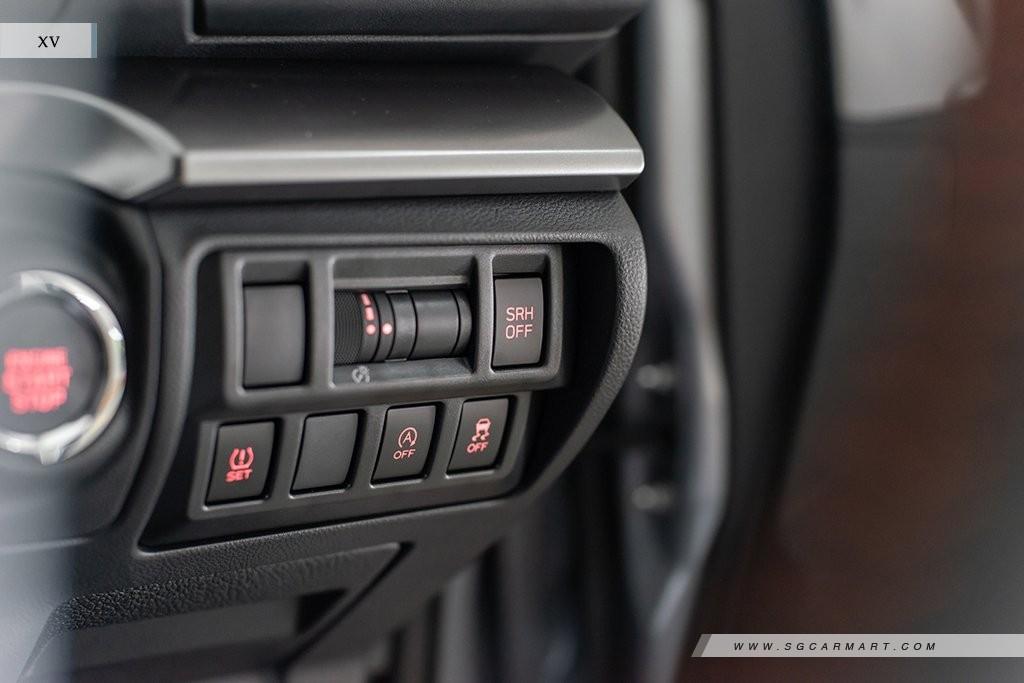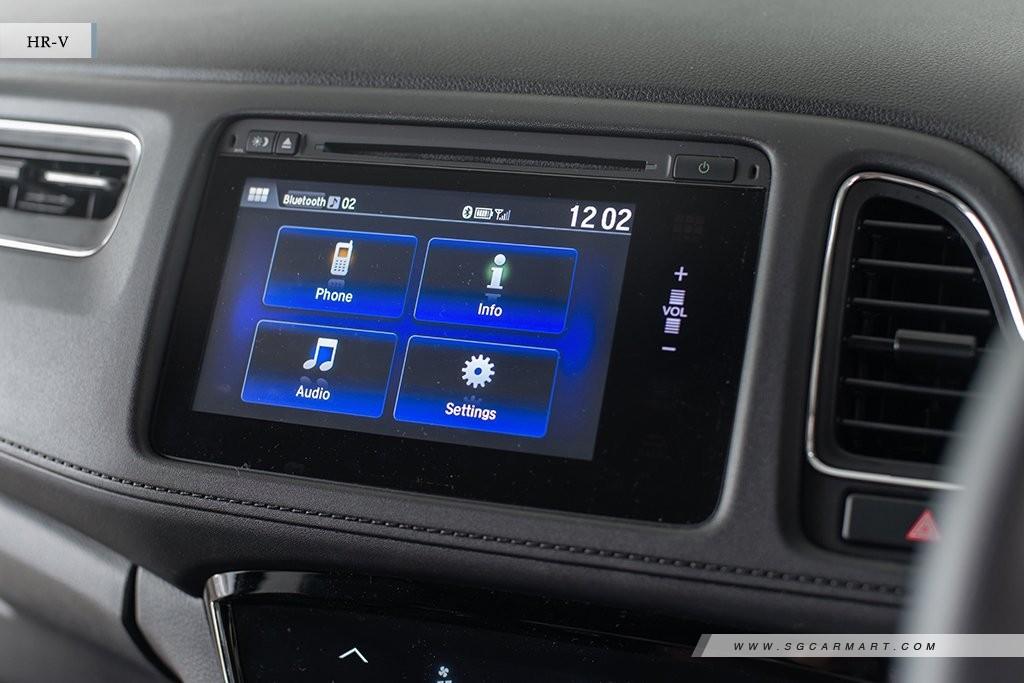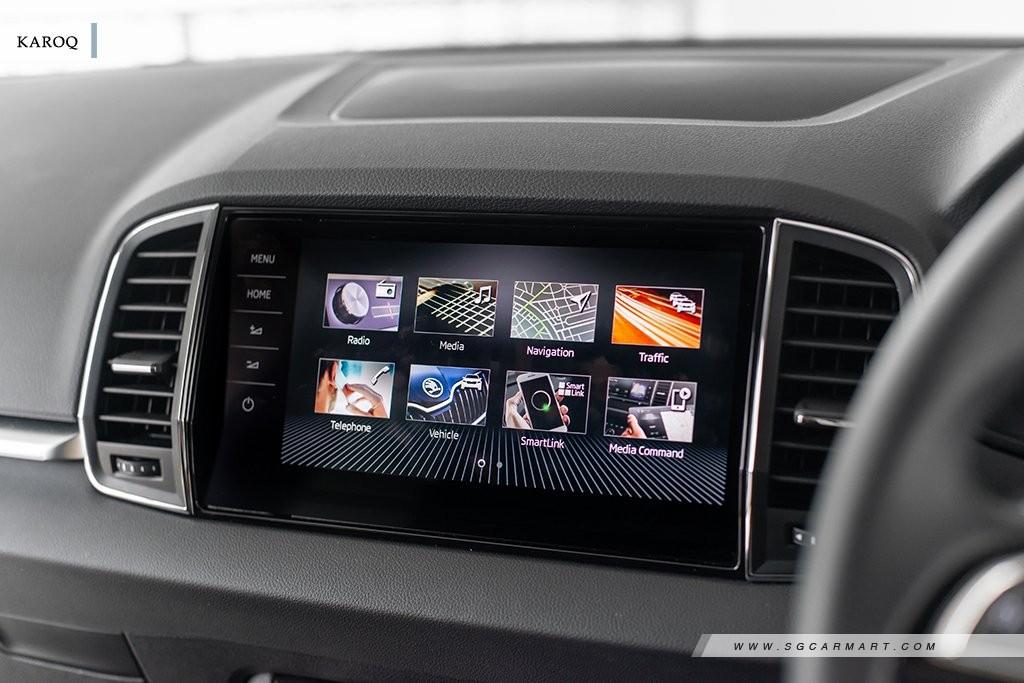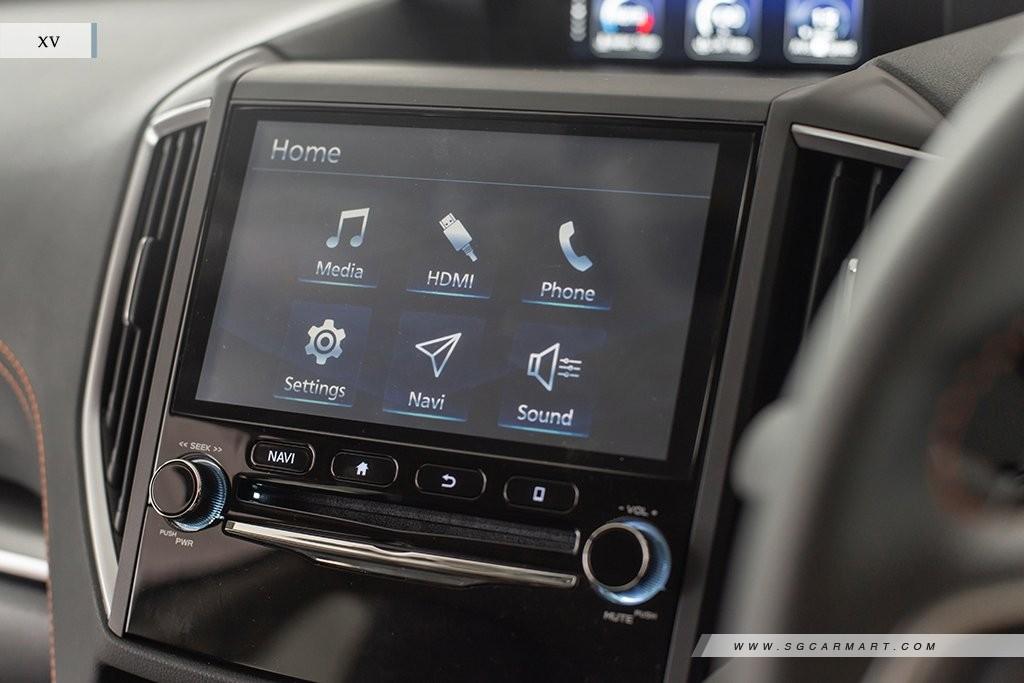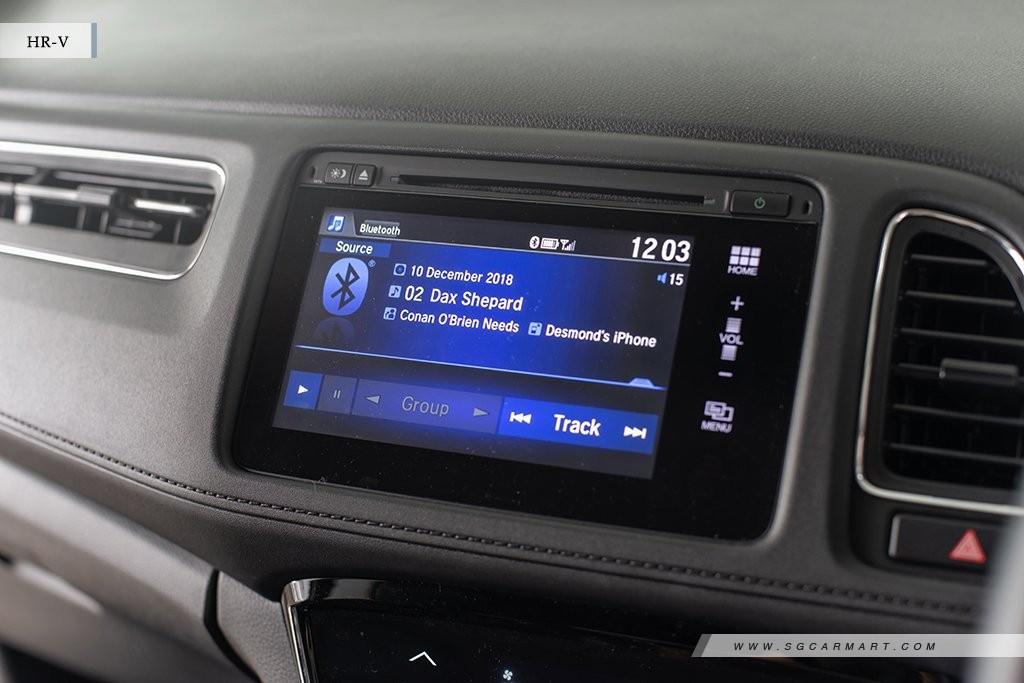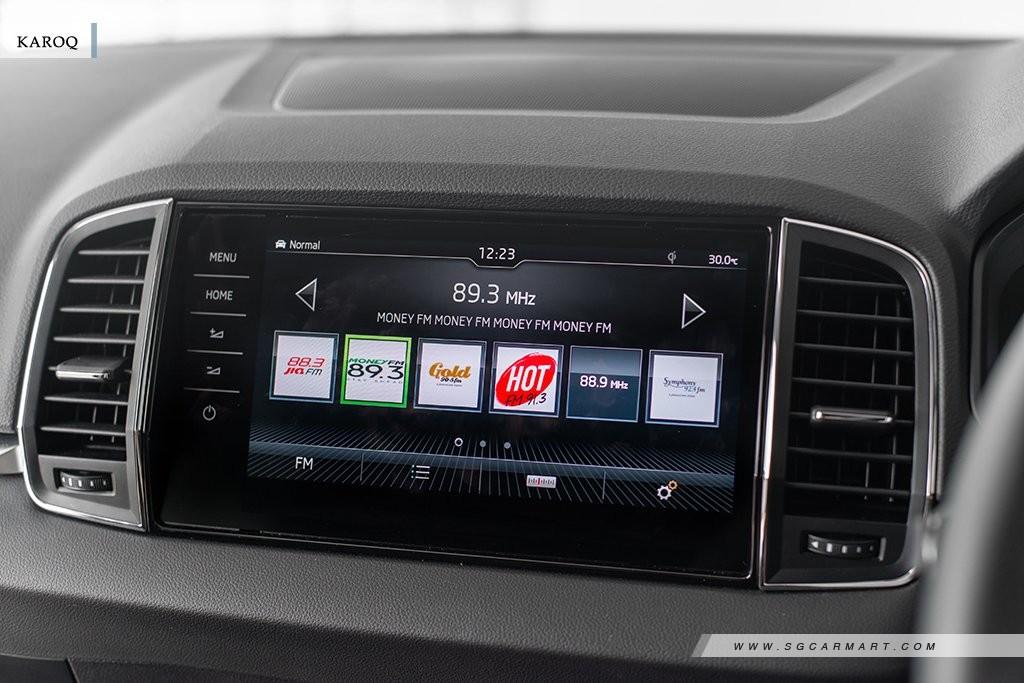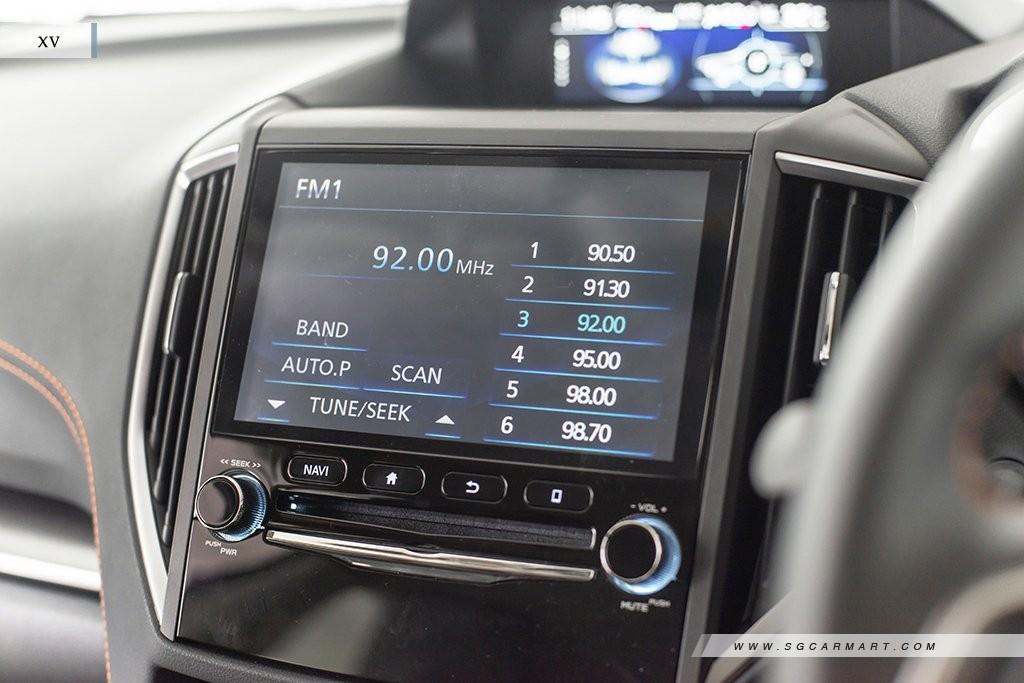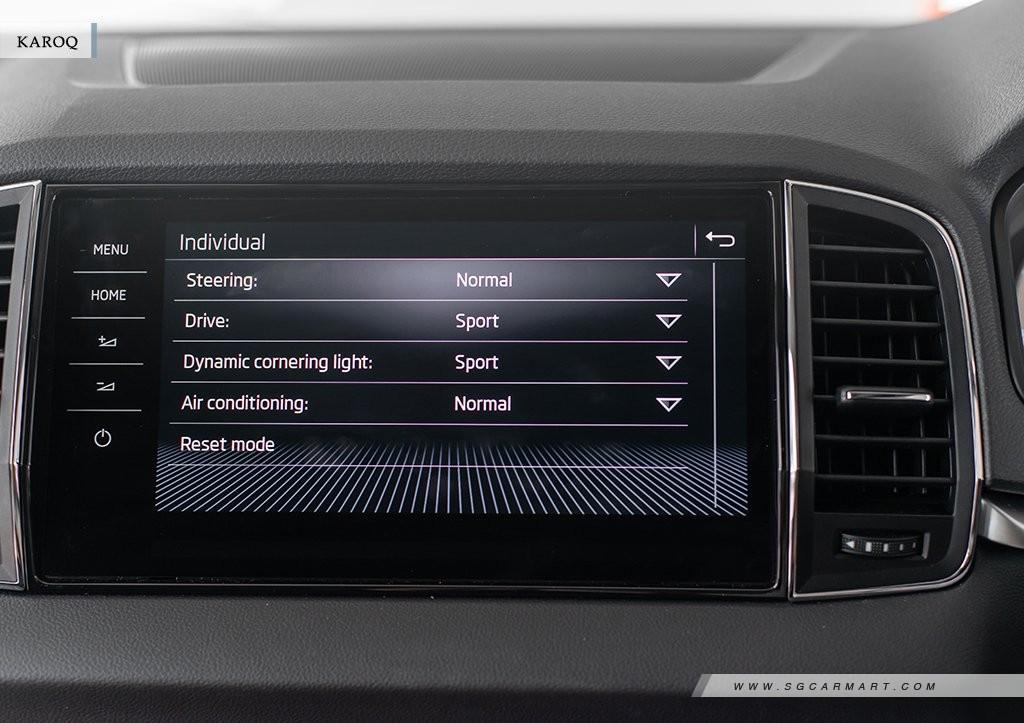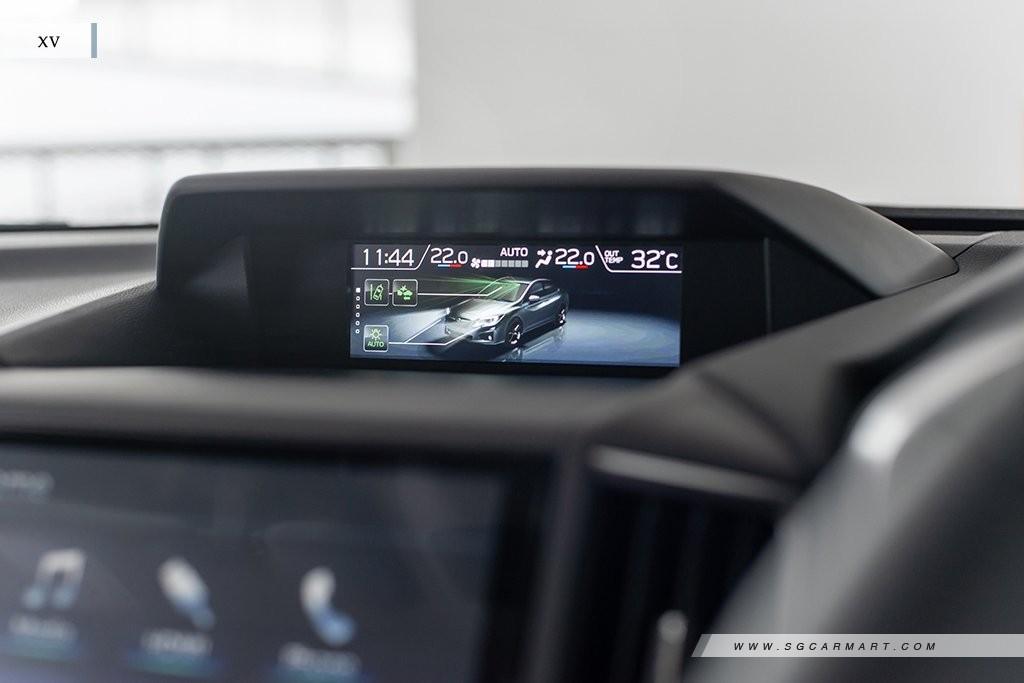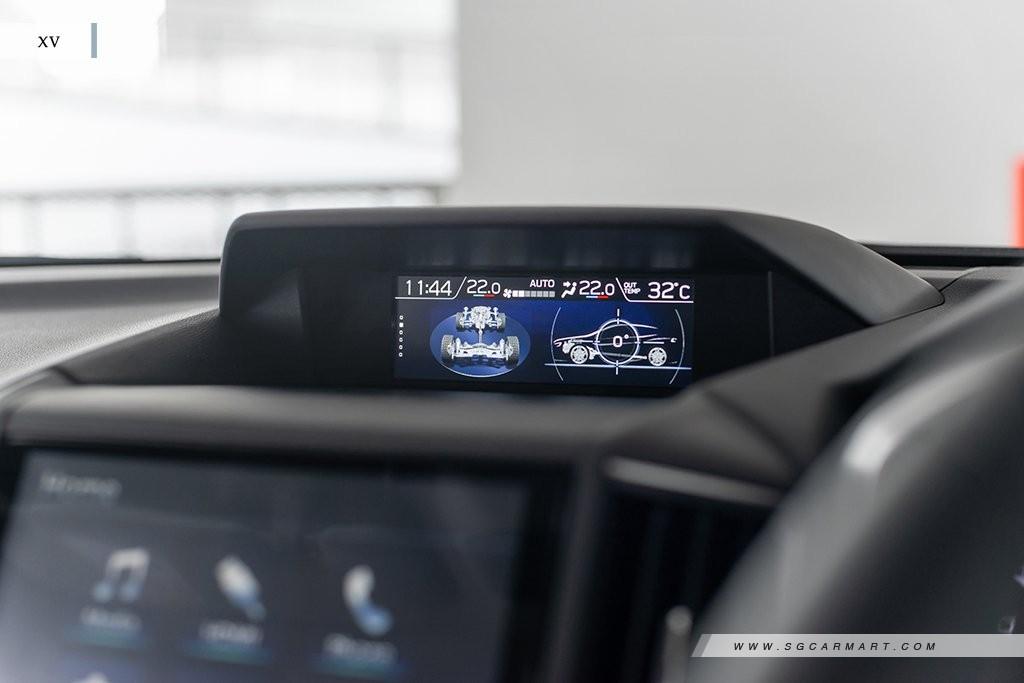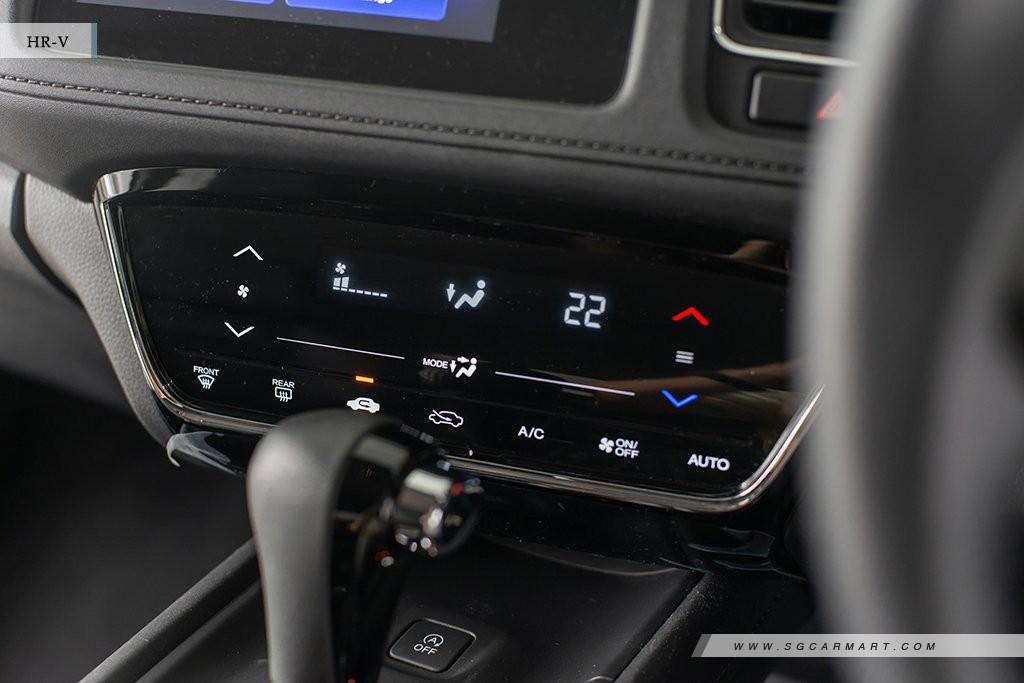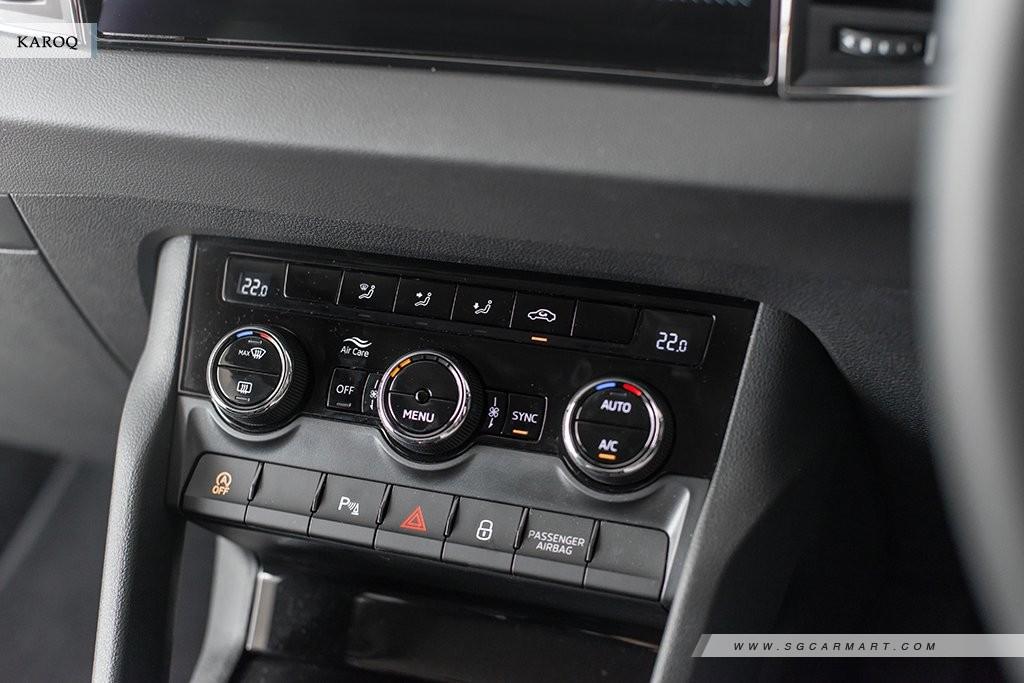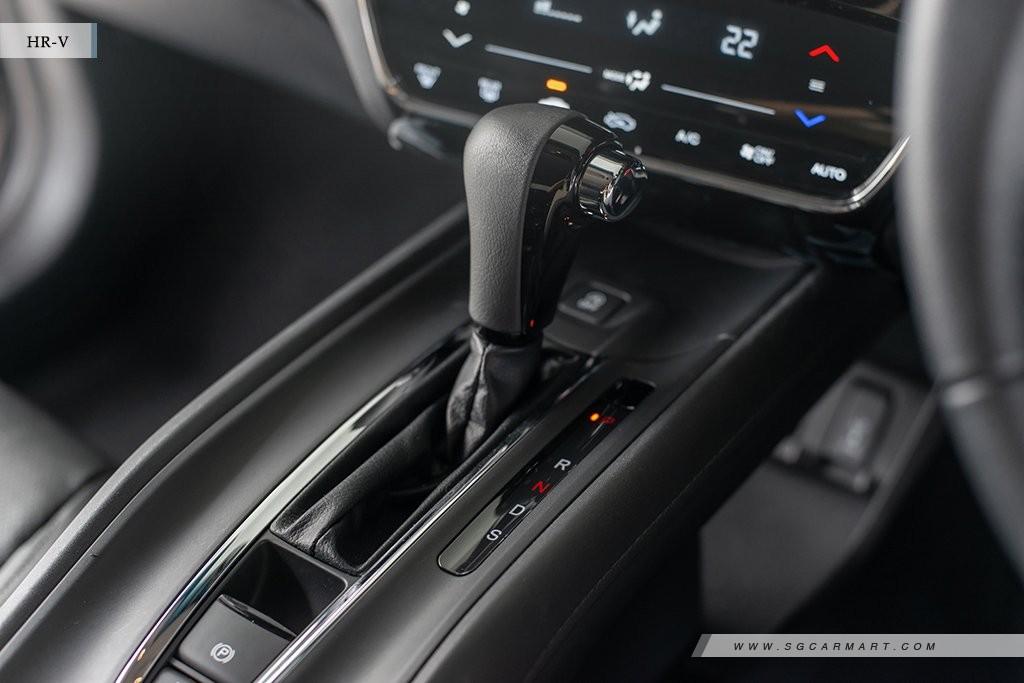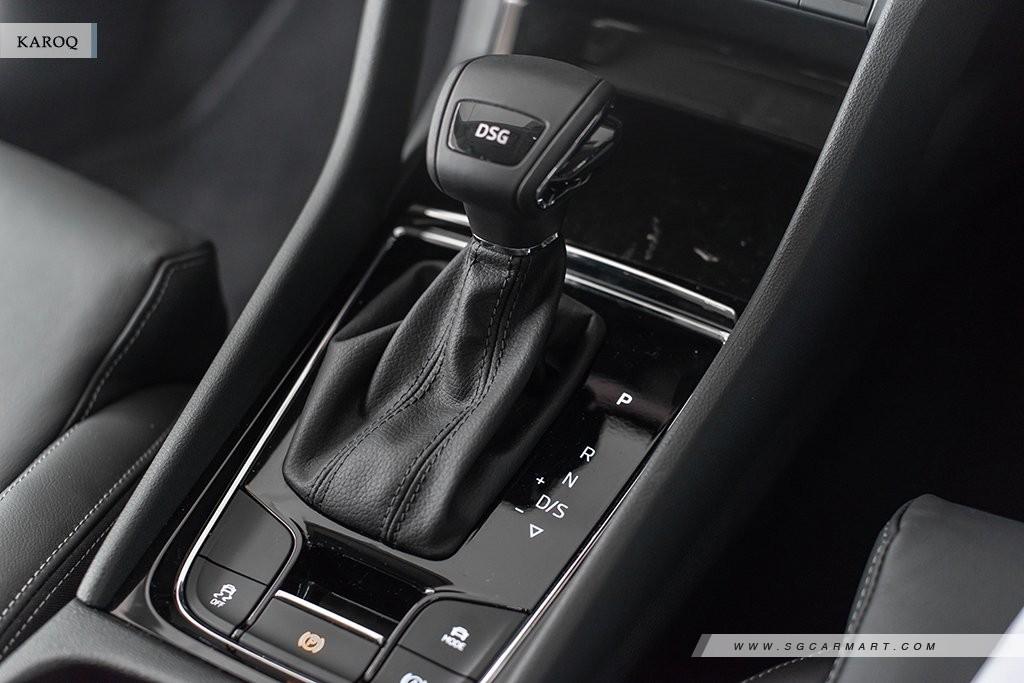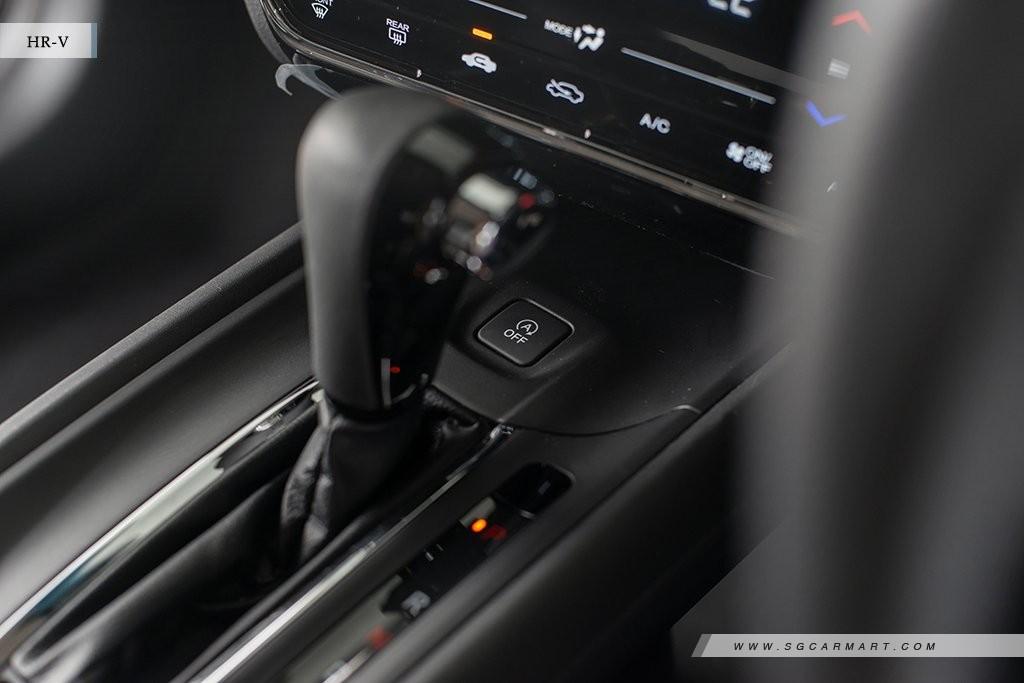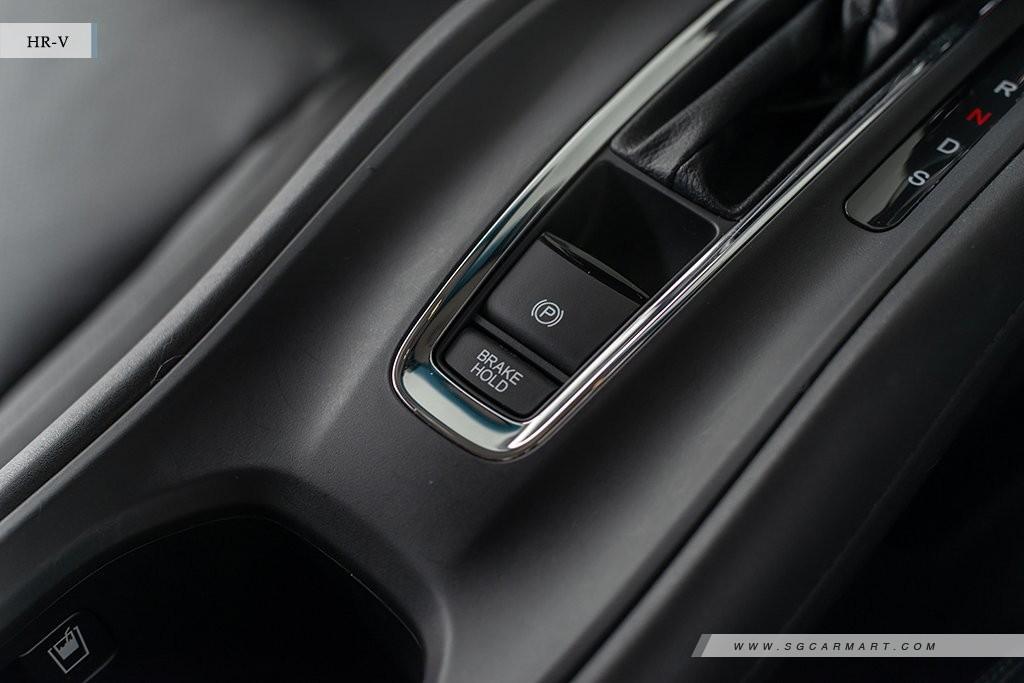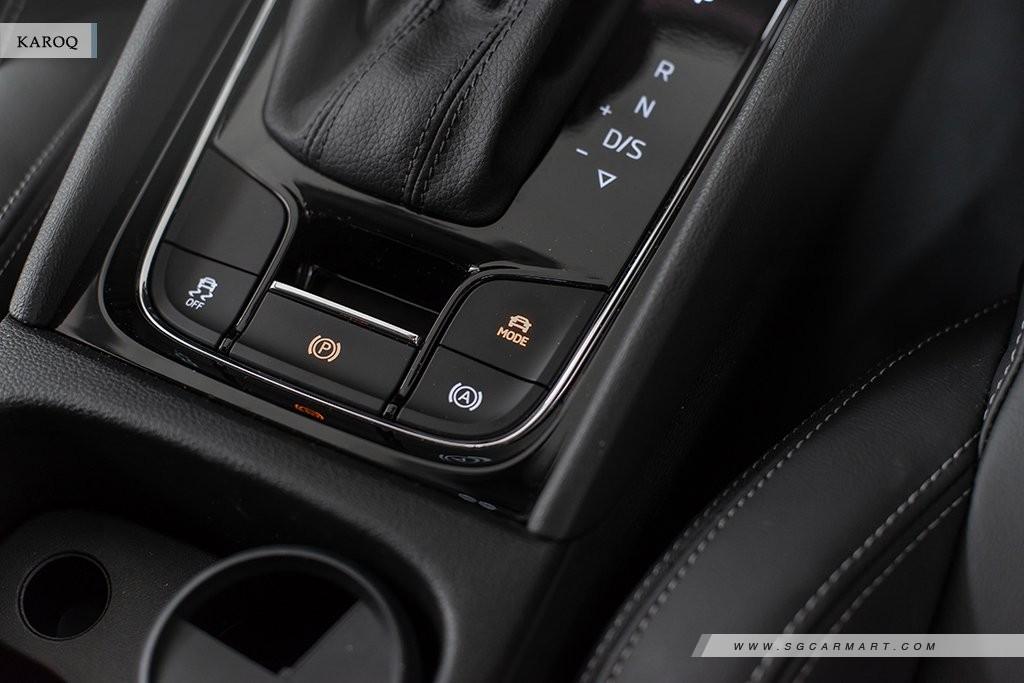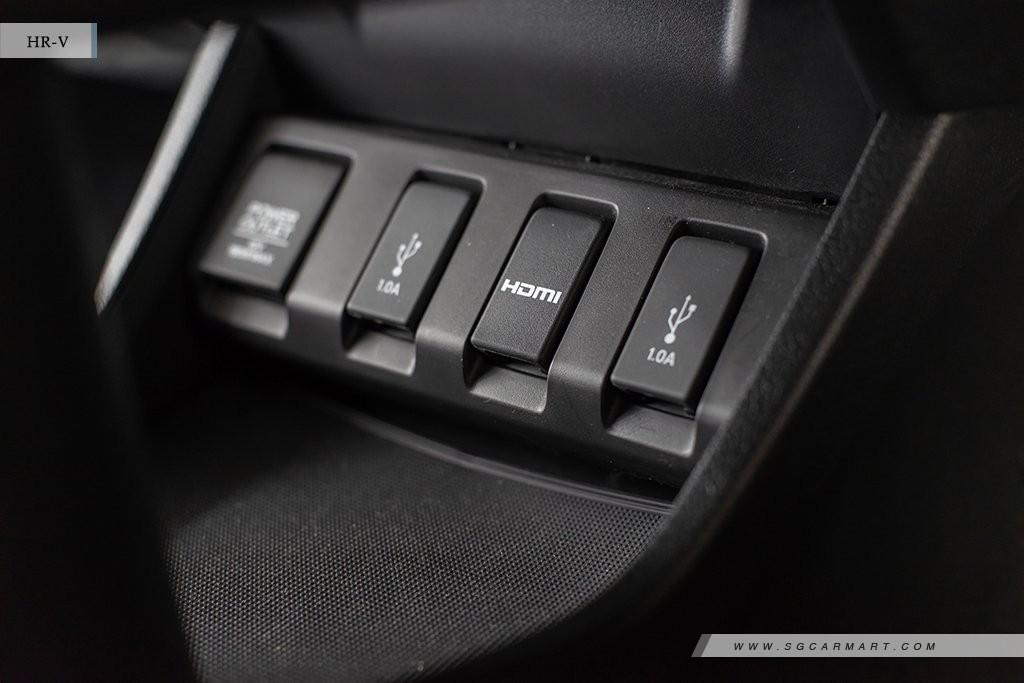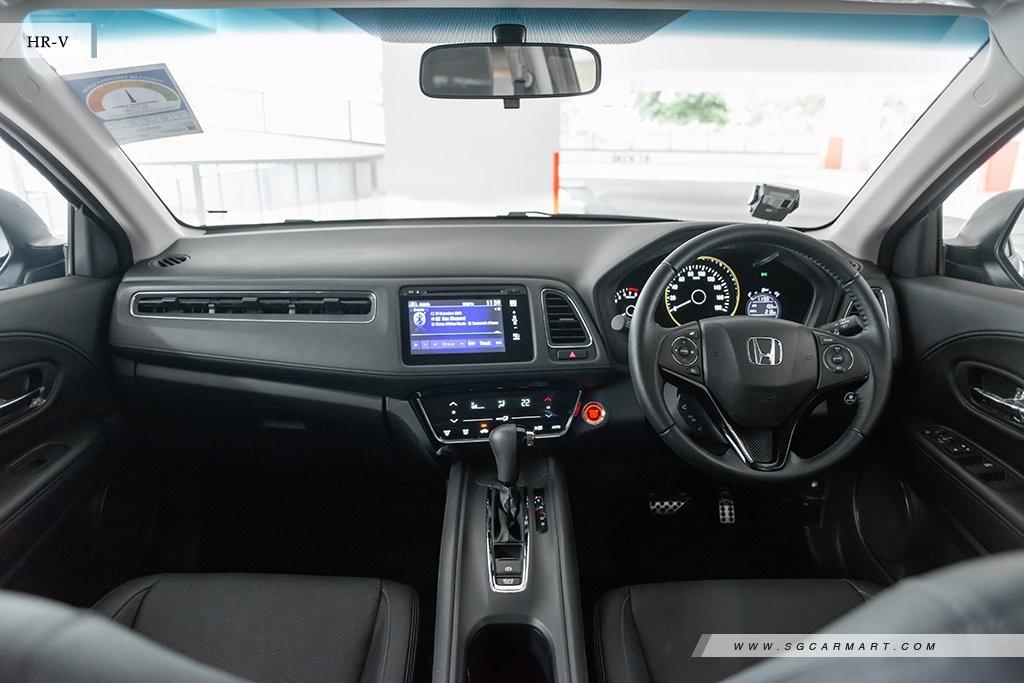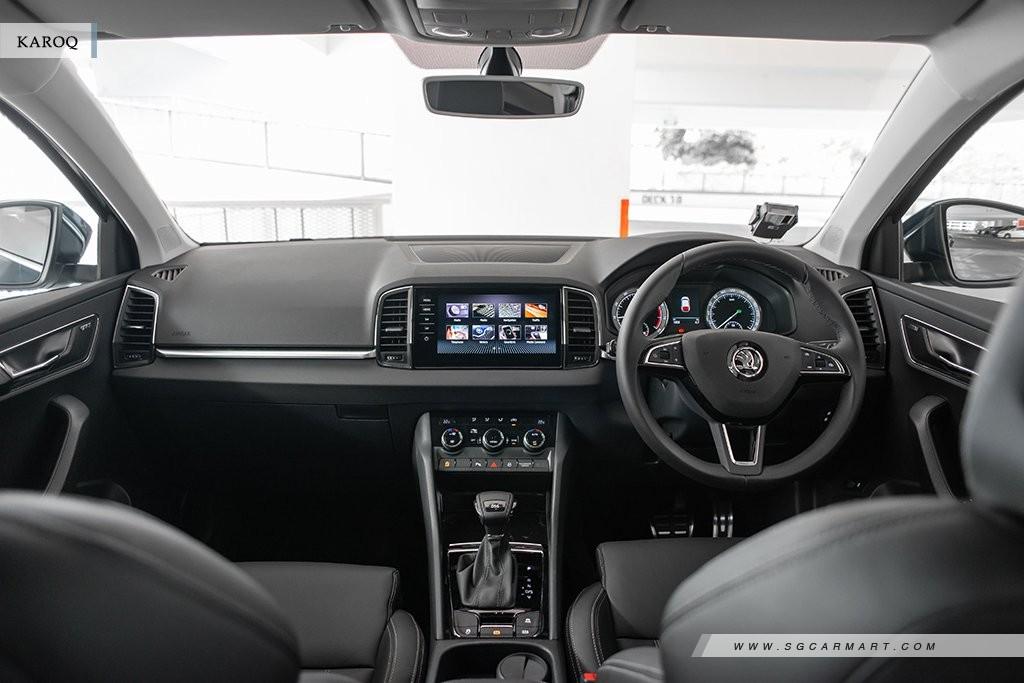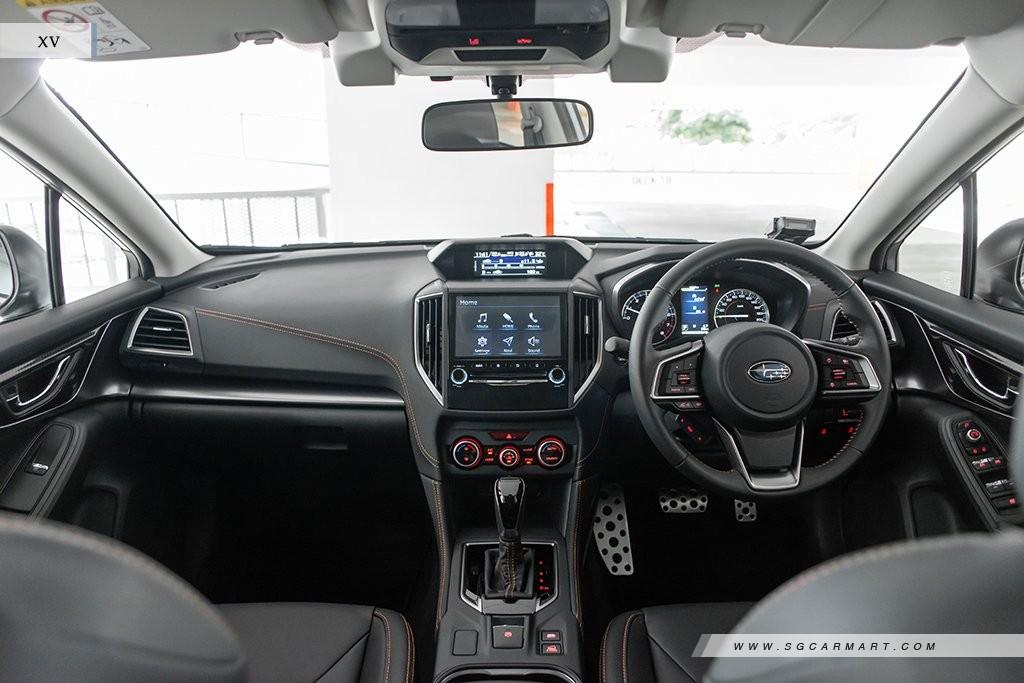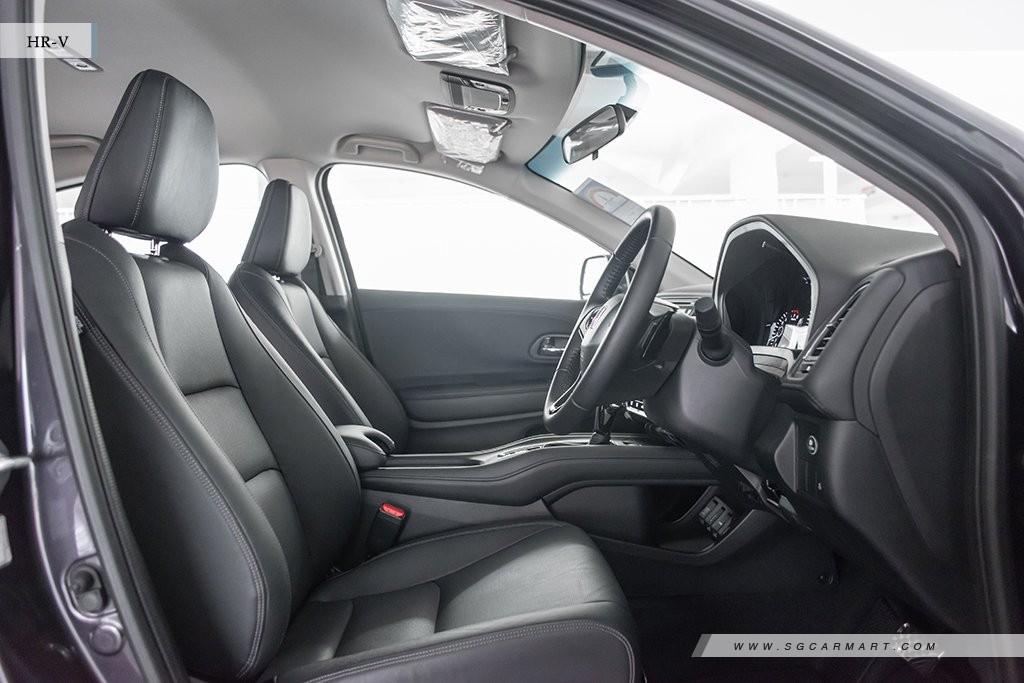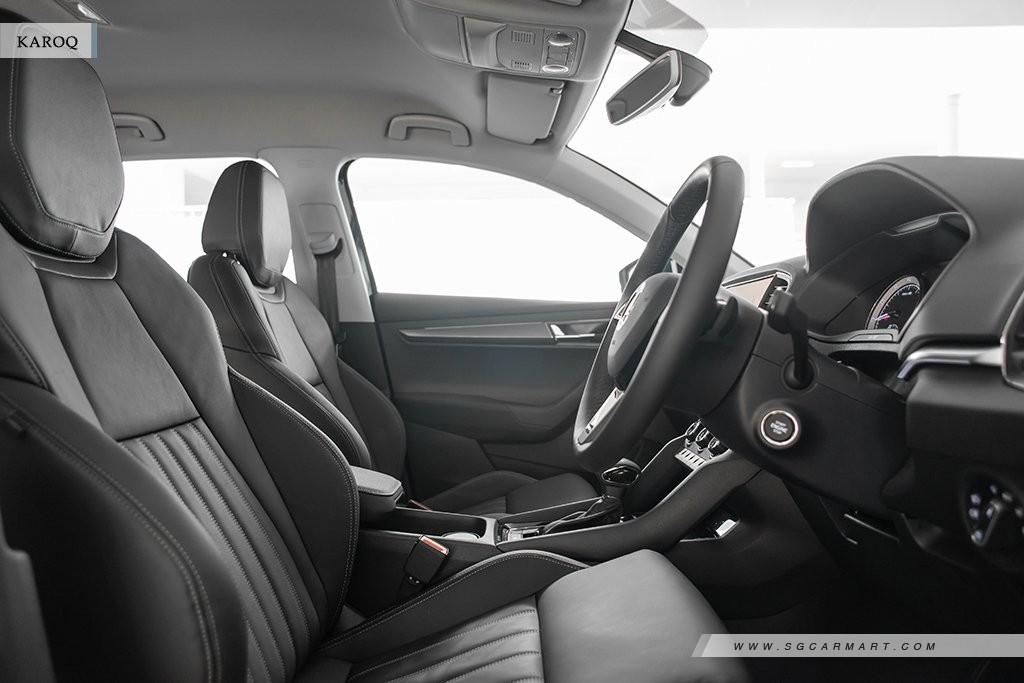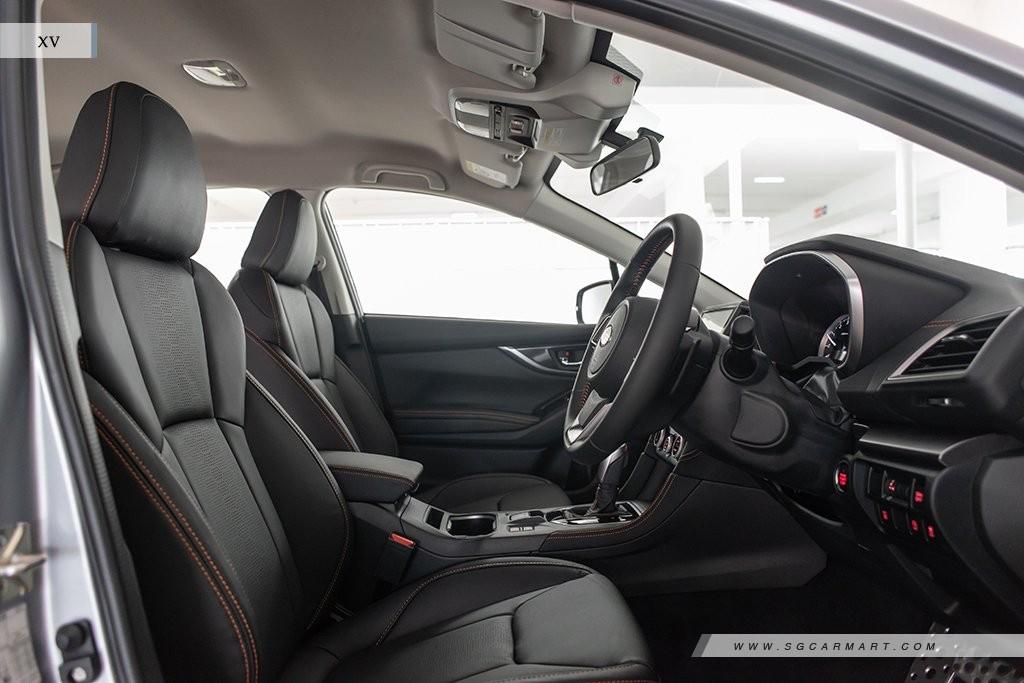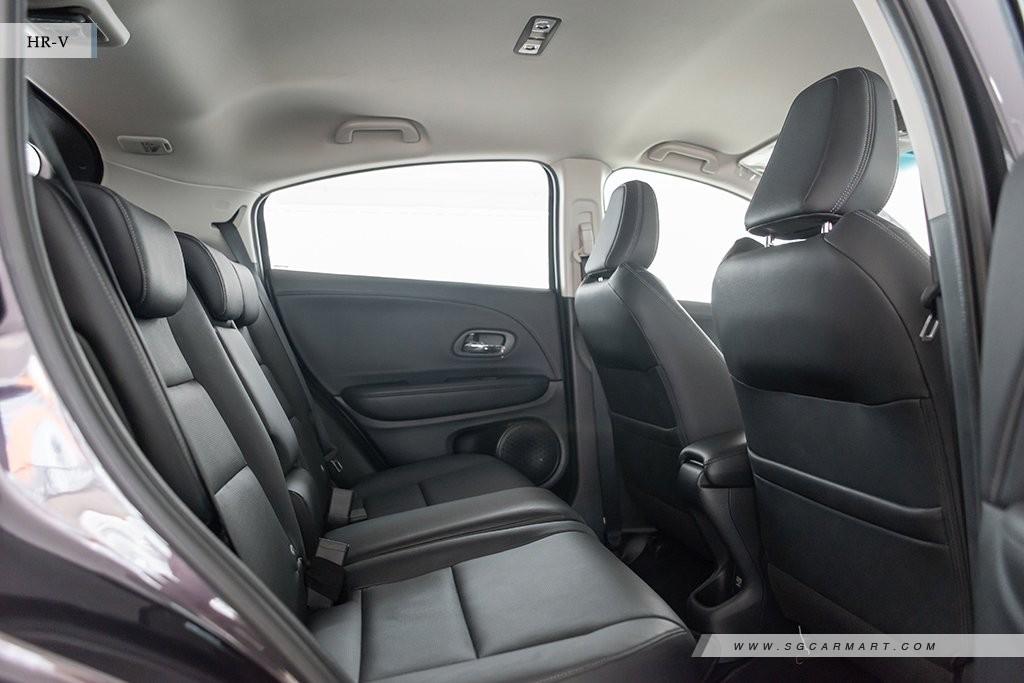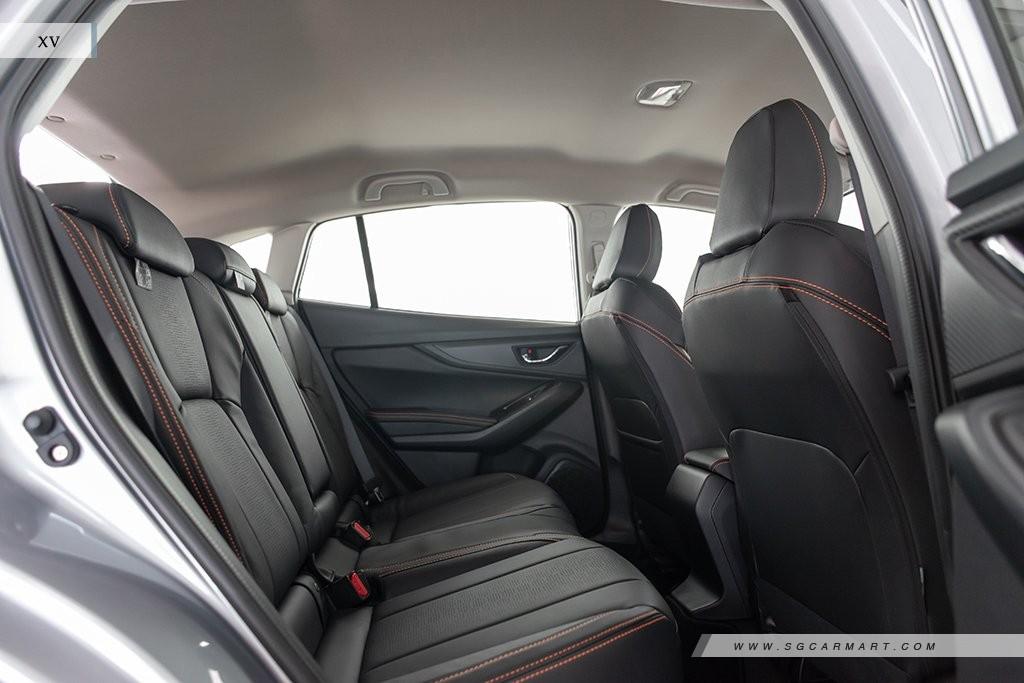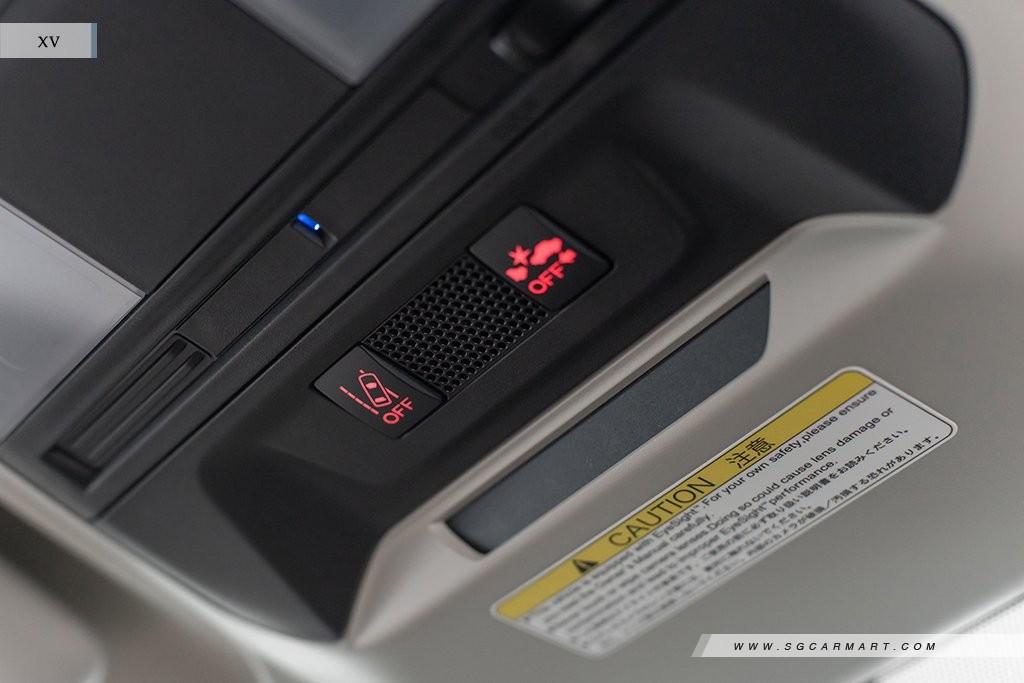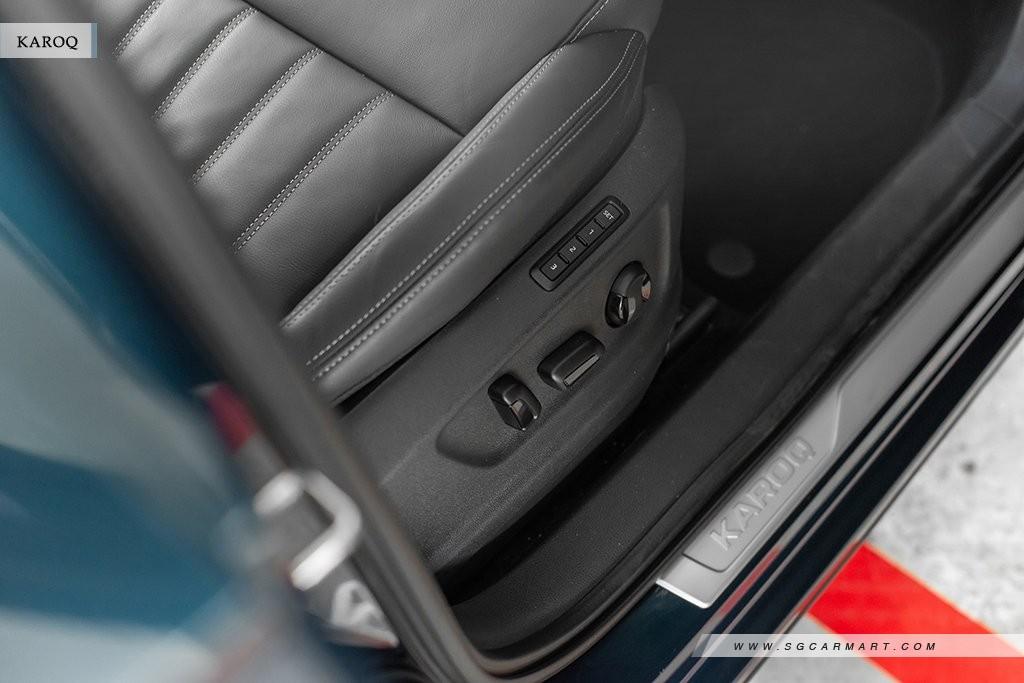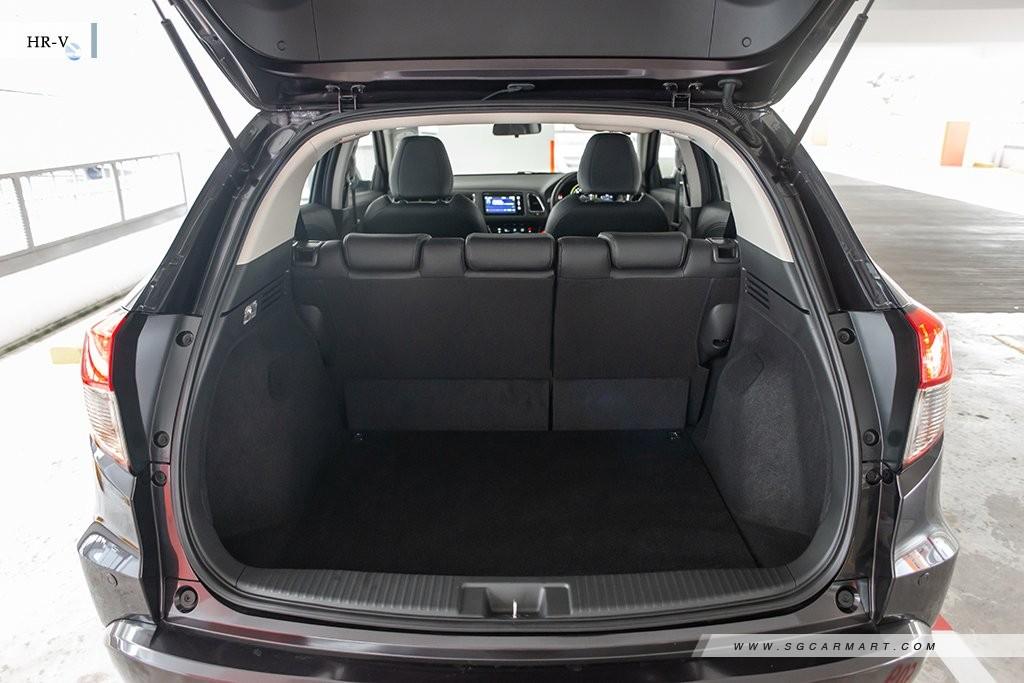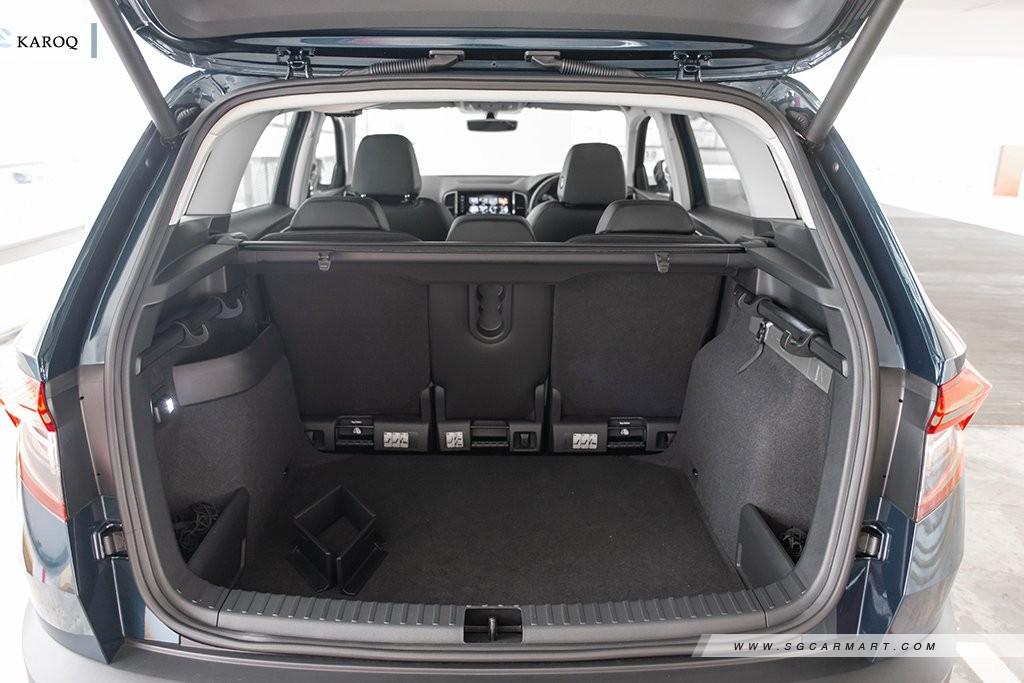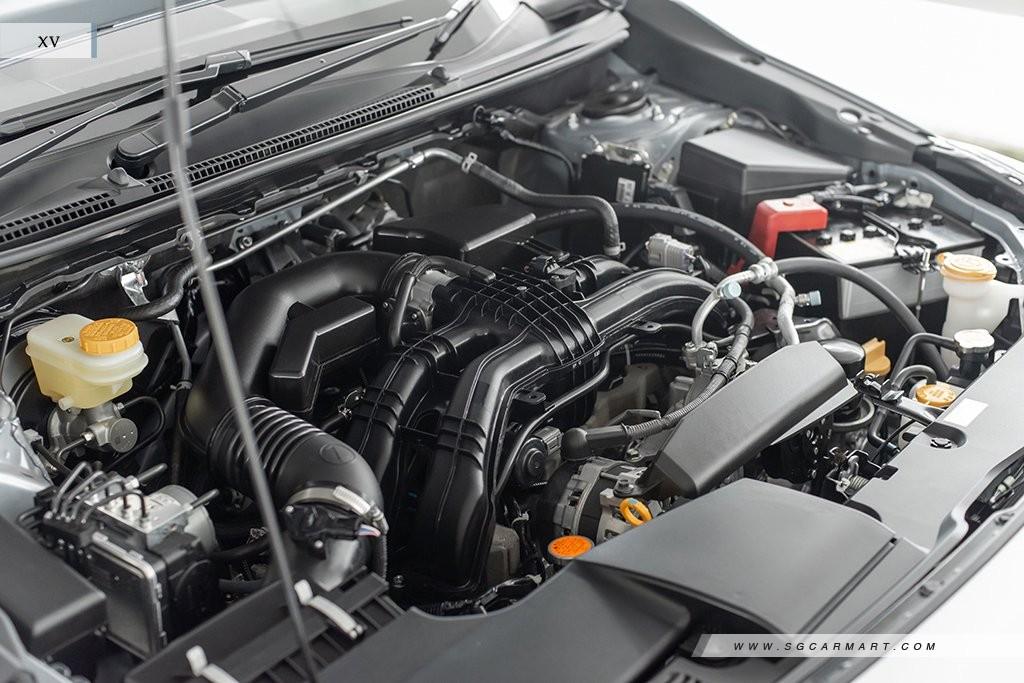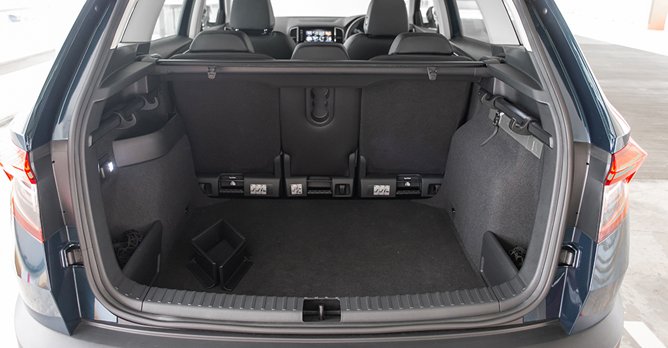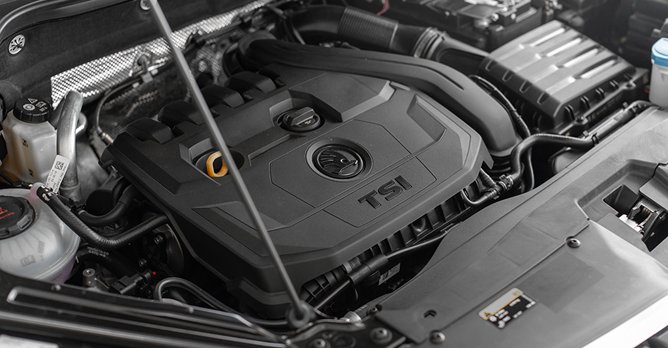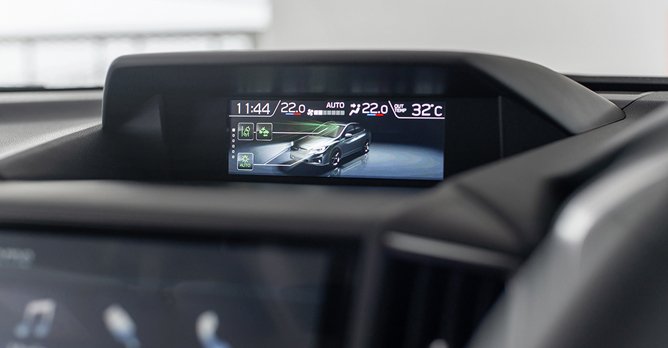Honda HR-V 1.5 vs Skoda Karoq 1.5 vs Subaru XV 2.0i-S
24 Dec 2018|27,428 views
HONDA HR-V 1.5
Roomiest-feeling second row
Decent fuel economy
Feels the least premium
SKODA KAROQ 1.5
Feels the most premium inside and out
Toriquest and quickest of the three
Biggest boot with the cleverest storage solutions
SUBARU XV 2.0I-S
Sportiest-looking inside and out
Most safety features
Most comfortable ride quality
Yet another crossover has found home on our shores. This time around it's a clever Czech called the Skoda Karoq. Smaller than the seven-seating Skoda Kodiaq, the Karoq enters a segment dominated by the likes of the Honda HR-V and the Subaru XV.
Just how will this newcomer fare against its much more established Japanese rivals? We find out.
A matter of practicality
In standard seating configuration, the Karoq offers 521 litres of boot space, which trumps the HR-V's and XV's 470 litres and 385 litres respectively.
But that's just the tip of the Karoq's iceberg. While the HR-V's rear seat bases can be folded against the seat backs, thus allowing for cargo to slide in easily into the second row, the Karoq's rear seats can be completely removed from the car.
In doing so, the Karoq offers a total 1,810 litres, while the HR-V tops out with 1,533 litres, followed by the XV's 835 litres in maximum cargo-carrying configuration. But the XV makes it up for this with its passenger space, thanks to its longest wheelbase of the three at 2,665mm. In the second row, it feels as spacious as the HR-V, outsizing the Karoq.
A matter of comfort
The XV also offers the best ride quality (read: soft and supple) among the three, with the Karoq trailing a very close second (but losing out slightly due to stiffness of suspension), while the lumpy HR-V ranks last.
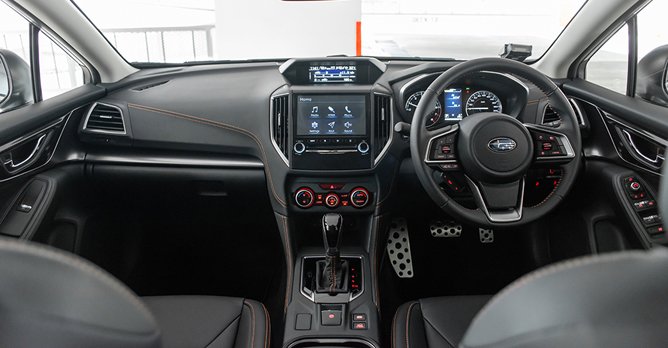
 The XV has the sportiest-looking cabin, and also offers slightly better-quality materials than the HR-V
The XV has the sportiest-looking cabin, and also offers slightly better-quality materials than the HR-V
The XV feels like it has the most cohesive chassis and suspension pairing, and absorbs imperfections on the road with the sort of ease that is surprising considering it's the most affordable one here at $93,800 (as of 20 December 2018).
It's also better at keeping road and wind noise out of the cabin than the HR-V, almost on par with the Karoq, which is impressive as it costs almost $30,000 lesser. However, where cabin niceties are concerned, the Karoq once again takes top spot with a design, fit and finish that feels the most expensive of the three.
In this aspect, the XV will have to settle for second place, while Honda will admittedly have a bit of improving up to do if it wants to maintain its standing as a more premium Japanese brand. The quality of materials used in its cabin is slightly poorer than Subaru's.
A matter of driving enjoyment
The XV may have bragging rights to the most horsepower here with 153bhp but the Karoq has the most torque, rated at 250Nm. Credit goes to turbocharging, of which only the Karoq employs in this test.
Coupled with a seven-speed dual-clutch, acceleration feels the perkiest in the Karoq, and it's the quickest from 0-100km/h, taking just nine seconds while the XV takes 10.4 seconds and the HR-V takes 11.8 seconds.
Just how will this newcomer fare against its much more established Japanese rivals? We find out.
A matter of practicality
In standard seating configuration, the Karoq offers 521 litres of boot space, which trumps the HR-V's and XV's 470 litres and 385 litres respectively.
But that's just the tip of the Karoq's iceberg. While the HR-V's rear seat bases can be folded against the seat backs, thus allowing for cargo to slide in easily into the second row, the Karoq's rear seats can be completely removed from the car.
In doing so, the Karoq offers a total 1,810 litres, while the HR-V tops out with 1,533 litres, followed by the XV's 835 litres in maximum cargo-carrying configuration. But the XV makes it up for this with its passenger space, thanks to its longest wheelbase of the three at 2,665mm. In the second row, it feels as spacious as the HR-V, outsizing the Karoq.
A matter of comfort
The XV also offers the best ride quality (read: soft and supple) among the three, with the Karoq trailing a very close second (but losing out slightly due to stiffness of suspension), while the lumpy HR-V ranks last.

The XV feels like it has the most cohesive chassis and suspension pairing, and absorbs imperfections on the road with the sort of ease that is surprising considering it's the most affordable one here at $93,800 (as of 20 December 2018).
It's also better at keeping road and wind noise out of the cabin than the HR-V, almost on par with the Karoq, which is impressive as it costs almost $30,000 lesser. However, where cabin niceties are concerned, the Karoq once again takes top spot with a design, fit and finish that feels the most expensive of the three.
In this aspect, the XV will have to settle for second place, while Honda will admittedly have a bit of improving up to do if it wants to maintain its standing as a more premium Japanese brand. The quality of materials used in its cabin is slightly poorer than Subaru's.
A matter of driving enjoyment
The XV may have bragging rights to the most horsepower here with 153bhp but the Karoq has the most torque, rated at 250Nm. Credit goes to turbocharging, of which only the Karoq employs in this test.
Coupled with a seven-speed dual-clutch, acceleration feels the perkiest in the Karoq, and it's the quickest from 0-100km/h, taking just nine seconds while the XV takes 10.4 seconds and the HR-V takes 11.8 seconds.
Thanks to its more advanced powertrain pairing, and cylinder deactivation technology, the Karoq is also the most fuel efficient, managing 14.8km/L. The HR-V clocked a close 14.1km/L, with the XV trailing at 10.2km/L.
But on the go, it's the XV that feels the most composed, with a meatier steering than the Karoq and HR-V, and four-wheel drive, of which it is the only crossover here to have. Coupled with the aforementioned comfort it offers, it is the most pleasant one to drive, if you're not one for sporty driving.
But if it's heartier performance and zippy direction changes you prefer, the Karoq will be your cup of tea.
A matter of safety
As crossovers for the family, safety is perhaps one of the most important aspects to consider today. And this is where the XV proves as a force to be reckoned with, thanks to the Subaru EyeSight active safety system that it comes standard with.
EyeSight uses stereo cameras to process stereo images and identify the vehicle in front, obstacles, traffic lanes and other items. Under the right circumstances, it will apply the brakes or decrease the throttle to help reduce the severity of, or help avoid a collision.
Its features include pre-collision braking, adaptive cruise control, pre-collision throttle management, lane departure warning, lane sway warning and lead vehicle start alert.
That said, the Karoq, too, is equipped with several electric nannies such as front assist with city emergency brake and blind spot detect with rear traffic alert. But the XV's is a lot more comprehensive, for a lot less money.
A matter of value
At $122,900, the Karoq is the most expensive in this test, but it offers the most premium experience on the inside, is the most fun to drive and is the most fuel economical.
The HR-V is the second most expensive here at $94,999 and does not offer much more space than the XV. But we suspect that buyers will continue looking to it given its above average fuel economy, useful amount of small storage places around the dash, and Honda's renowned reliability and resale value.
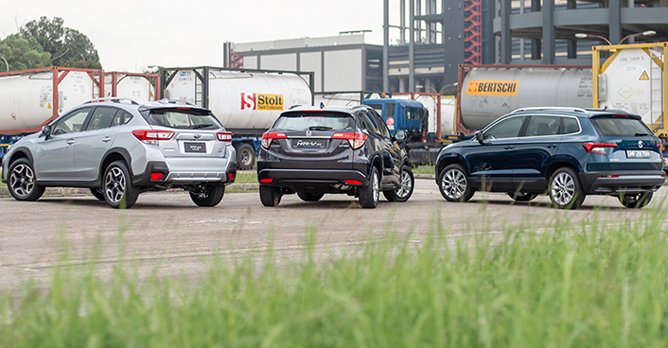
 The XV (left) offers the most bang for buck, the HR-V (centre) continues to be a practical choice, and the Karoq (right) is the most premium
The XV (left) offers the most bang for buck, the HR-V (centre) continues to be a practical choice, and the Karoq (right) is the most premium
However, with the best ride comfort, a competitive amount of space all around and the most impressive suite of safety features, the $93,800 XV is the one that offers the most car for your money. It is only disadvantaged by its 2.0-litre engine capacity, which would cost you more for annual road tax, compared to the other two.
But on the go, it's the XV that feels the most composed, with a meatier steering than the Karoq and HR-V, and four-wheel drive, of which it is the only crossover here to have. Coupled with the aforementioned comfort it offers, it is the most pleasant one to drive, if you're not one for sporty driving.
But if it's heartier performance and zippy direction changes you prefer, the Karoq will be your cup of tea.
A matter of safety
As crossovers for the family, safety is perhaps one of the most important aspects to consider today. And this is where the XV proves as a force to be reckoned with, thanks to the Subaru EyeSight active safety system that it comes standard with.
EyeSight uses stereo cameras to process stereo images and identify the vehicle in front, obstacles, traffic lanes and other items. Under the right circumstances, it will apply the brakes or decrease the throttle to help reduce the severity of, or help avoid a collision.
Its features include pre-collision braking, adaptive cruise control, pre-collision throttle management, lane departure warning, lane sway warning and lead vehicle start alert.
That said, the Karoq, too, is equipped with several electric nannies such as front assist with city emergency brake and blind spot detect with rear traffic alert. But the XV's is a lot more comprehensive, for a lot less money.
A matter of value
At $122,900, the Karoq is the most expensive in this test, but it offers the most premium experience on the inside, is the most fun to drive and is the most fuel economical.
The HR-V is the second most expensive here at $94,999 and does not offer much more space than the XV. But we suspect that buyers will continue looking to it given its above average fuel economy, useful amount of small storage places around the dash, and Honda's renowned reliability and resale value.

However, with the best ride comfort, a competitive amount of space all around and the most impressive suite of safety features, the $93,800 XV is the one that offers the most car for your money. It is only disadvantaged by its 2.0-litre engine capacity, which would cost you more for annual road tax, compared to the other two.
HONDA HR-V 1.5
Roomiest-feeling second row
Decent fuel economy
Feels the least premium
SKODA KAROQ 1.5
Feels the most premium inside and out
Toriquest and quickest of the three
Biggest boot with the cleverest storage solutions
SUBARU XV 2.0I-S
Sportiest-looking inside and out
Most safety features
Most comfortable ride quality
Yet another crossover has found home on our shores. This time around it's a clever Czech called the Skoda Karoq. Smaller than the seven-seating Skoda Kodiaq, the Karoq enters a segment dominated by the likes of the Honda HR-V and the Subaru XV.
Just how will this newcomer fare against its much more established Japanese rivals? We find out.
A matter of practicality
In standard seating configuration, the Karoq offers 521 litres of boot space, which trumps the HR-V's and XV's 470 litres and 385 litres respectively.
But that's just the tip of the Karoq's iceberg. While the HR-V's rear seat bases can be folded against the seat backs, thus allowing for cargo to slide in easily into the second row, the Karoq's rear seats can be completely removed from the car.
In doing so, the Karoq offers a total 1,810 litres, while the HR-V tops out with 1,533 litres, followed by the XV's 835 litres in maximum cargo-carrying configuration. But the XV makes it up for this with its passenger space, thanks to its longest wheelbase of the three at 2,665mm. In the second row, it feels as spacious as the HR-V, outsizing the Karoq.
A matter of comfort
The XV also offers the best ride quality (read: soft and supple) among the three, with the Karoq trailing a very close second (but losing out slightly due to stiffness of suspension), while the lumpy HR-V ranks last.

 The XV has the sportiest-looking cabin, and also offers slightly better-quality materials than the HR-VThe XV feels like it has the most cohesive chassis and suspension pairing, and absorbs imperfections on the road with the sort of ease that is surprising considering it's the most affordable one here at $93,800 (as of 20 December 2018).
The XV has the sportiest-looking cabin, and also offers slightly better-quality materials than the HR-VThe XV feels like it has the most cohesive chassis and suspension pairing, and absorbs imperfections on the road with the sort of ease that is surprising considering it's the most affordable one here at $93,800 (as of 20 December 2018).
It's also better at keeping road and wind noise out of the cabin than the HR-V, almost on par with the Karoq, which is impressive as it costs almost $30,000 lesser. However, where cabin niceties are concerned, the Karoq once again takes top spot with a design, fit and finish that feels the most expensive of the three.
In this aspect, the XV will have to settle for second place, while Honda will admittedly have a bit of improving up to do if it wants to maintain its standing as a more premium Japanese brand. The quality of materials used in its cabin is slightly poorer than Subaru's.
A matter of driving enjoyment
The XV may have bragging rights to the most horsepower here with 153bhp but the Karoq has the most torque, rated at 250Nm. Credit goes to turbocharging, of which only the Karoq employs in this test.
Coupled with a seven-speed dual-clutch, acceleration feels the perkiest in the Karoq, and it's the quickest from 0-100km/h, taking just nine seconds while the XV takes 10.4 seconds and the HR-V takes 11.8 seconds.
Just how will this newcomer fare against its much more established Japanese rivals? We find out.
A matter of practicality
In standard seating configuration, the Karoq offers 521 litres of boot space, which trumps the HR-V's and XV's 470 litres and 385 litres respectively.
But that's just the tip of the Karoq's iceberg. While the HR-V's rear seat bases can be folded against the seat backs, thus allowing for cargo to slide in easily into the second row, the Karoq's rear seats can be completely removed from the car.
In doing so, the Karoq offers a total 1,810 litres, while the HR-V tops out with 1,533 litres, followed by the XV's 835 litres in maximum cargo-carrying configuration. But the XV makes it up for this with its passenger space, thanks to its longest wheelbase of the three at 2,665mm. In the second row, it feels as spacious as the HR-V, outsizing the Karoq.
A matter of comfort
The XV also offers the best ride quality (read: soft and supple) among the three, with the Karoq trailing a very close second (but losing out slightly due to stiffness of suspension), while the lumpy HR-V ranks last.

It's also better at keeping road and wind noise out of the cabin than the HR-V, almost on par with the Karoq, which is impressive as it costs almost $30,000 lesser. However, where cabin niceties are concerned, the Karoq once again takes top spot with a design, fit and finish that feels the most expensive of the three.
In this aspect, the XV will have to settle for second place, while Honda will admittedly have a bit of improving up to do if it wants to maintain its standing as a more premium Japanese brand. The quality of materials used in its cabin is slightly poorer than Subaru's.
A matter of driving enjoyment
The XV may have bragging rights to the most horsepower here with 153bhp but the Karoq has the most torque, rated at 250Nm. Credit goes to turbocharging, of which only the Karoq employs in this test.
Coupled with a seven-speed dual-clutch, acceleration feels the perkiest in the Karoq, and it's the quickest from 0-100km/h, taking just nine seconds while the XV takes 10.4 seconds and the HR-V takes 11.8 seconds.
Thanks to its more advanced powertrain pairing, and cylinder deactivation technology, the Karoq is also the most fuel efficient, managing 14.8km/L. The HR-V clocked a close 14.1km/L, with the XV trailing at 10.2km/L.
But on the go, it's the XV that feels the most composed, with a meatier steering than the Karoq and HR-V, and four-wheel drive, of which it is the only crossover here to have. Coupled with the aforementioned comfort it offers, it is the most pleasant one to drive, if you're not one for sporty driving.
But if it's heartier performance and zippy direction changes you prefer, the Karoq will be your cup of tea.
A matter of safety
As crossovers for the family, safety is perhaps one of the most important aspects to consider today. And this is where the XV proves as a force to be reckoned with, thanks to the Subaru EyeSight active safety system that it comes standard with.
EyeSight uses stereo cameras to process stereo images and identify the vehicle in front, obstacles, traffic lanes and other items. Under the right circumstances, it will apply the brakes or decrease the throttle to help reduce the severity of, or help avoid a collision.
Its features include pre-collision braking, adaptive cruise control, pre-collision throttle management, lane departure warning, lane sway warning and lead vehicle start alert.
That said, the Karoq, too, is equipped with several electric nannies such as front assist with city emergency brake and blind spot detect with rear traffic alert. But the XV's is a lot more comprehensive, for a lot less money.
A matter of value
At $122,900, the Karoq is the most expensive in this test, but it offers the most premium experience on the inside, is the most fun to drive and is the most fuel economical.
The HR-V is the second most expensive here at $94,999 and does not offer much more space than the XV. But we suspect that buyers will continue looking to it given its above average fuel economy, useful amount of small storage places around the dash, and Honda's renowned reliability and resale value.
However, with the best ride comfort, a competitive amount of space all around and the most impressive suite of safety features, the $93,800 XV is the one that offers the most car for your money. It is only disadvantaged by its 2.0-litre engine capacity, which would cost you more for annual road tax, compared to the other two.
But on the go, it's the XV that feels the most composed, with a meatier steering than the Karoq and HR-V, and four-wheel drive, of which it is the only crossover here to have. Coupled with the aforementioned comfort it offers, it is the most pleasant one to drive, if you're not one for sporty driving.
But if it's heartier performance and zippy direction changes you prefer, the Karoq will be your cup of tea.
A matter of safety
As crossovers for the family, safety is perhaps one of the most important aspects to consider today. And this is where the XV proves as a force to be reckoned with, thanks to the Subaru EyeSight active safety system that it comes standard with.
EyeSight uses stereo cameras to process stereo images and identify the vehicle in front, obstacles, traffic lanes and other items. Under the right circumstances, it will apply the brakes or decrease the throttle to help reduce the severity of, or help avoid a collision.
Its features include pre-collision braking, adaptive cruise control, pre-collision throttle management, lane departure warning, lane sway warning and lead vehicle start alert.
That said, the Karoq, too, is equipped with several electric nannies such as front assist with city emergency brake and blind spot detect with rear traffic alert. But the XV's is a lot more comprehensive, for a lot less money.
A matter of value
At $122,900, the Karoq is the most expensive in this test, but it offers the most premium experience on the inside, is the most fun to drive and is the most fuel economical.
The HR-V is the second most expensive here at $94,999 and does not offer much more space than the XV. But we suspect that buyers will continue looking to it given its above average fuel economy, useful amount of small storage places around the dash, and Honda's renowned reliability and resale value.
However, with the best ride comfort, a competitive amount of space all around and the most impressive suite of safety features, the $93,800 XV is the one that offers the most car for your money. It is only disadvantaged by its 2.0-litre engine capacity, which would cost you more for annual road tax, compared to the other two.
Car Information
Honda HR-V 1.5 Plus LX (A)
CAT A|Petrol|17.5km/L
Horsepower
96kW (129 bhp)
Torque
155 Nm
Acceleration
11.8sec (0-100km /hr)
This model is no longer being sold by local distributor
All Used Honda HR-VSubaru XV 2.0i-S EyeSight (A)
CAT B|Petrol|14.3km/L
Horsepower
115kW (154 bhp)
Torque
196 Nm
Acceleration
10.4sec (0-100km /hr)
This model is no longer being sold by local distributor
All Used Subaru XVSkoda Karoq 1.5 TSI Style (A)
CAT B|Petrol|15.2km/L
Horsepower
110kW (148 bhp)
Torque
250 Nm
Acceleration
9sec (0-100km /hr)
This model is no longer being sold by local distributor
All Used Skoda KaroqThank You For Your Subscription.
